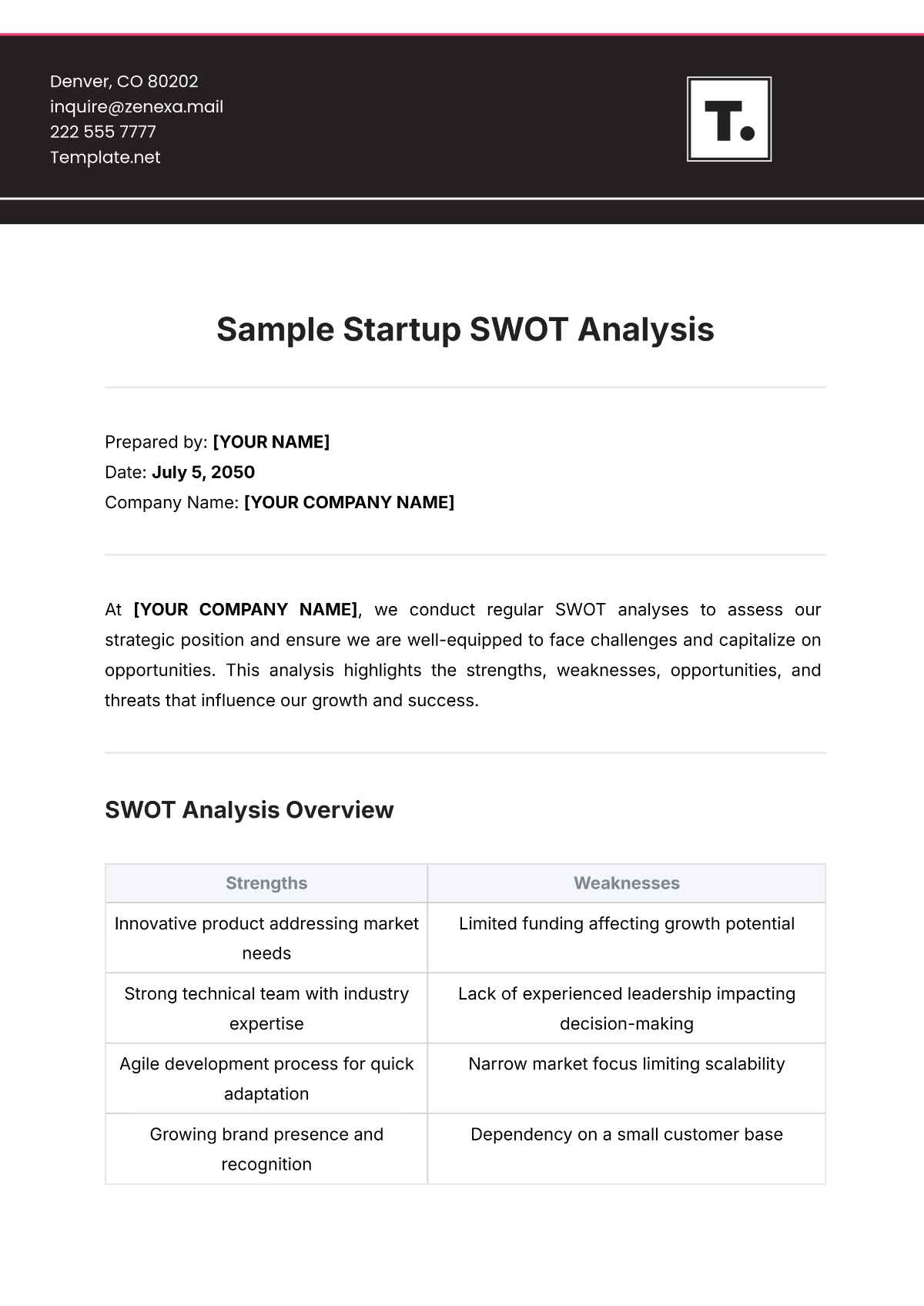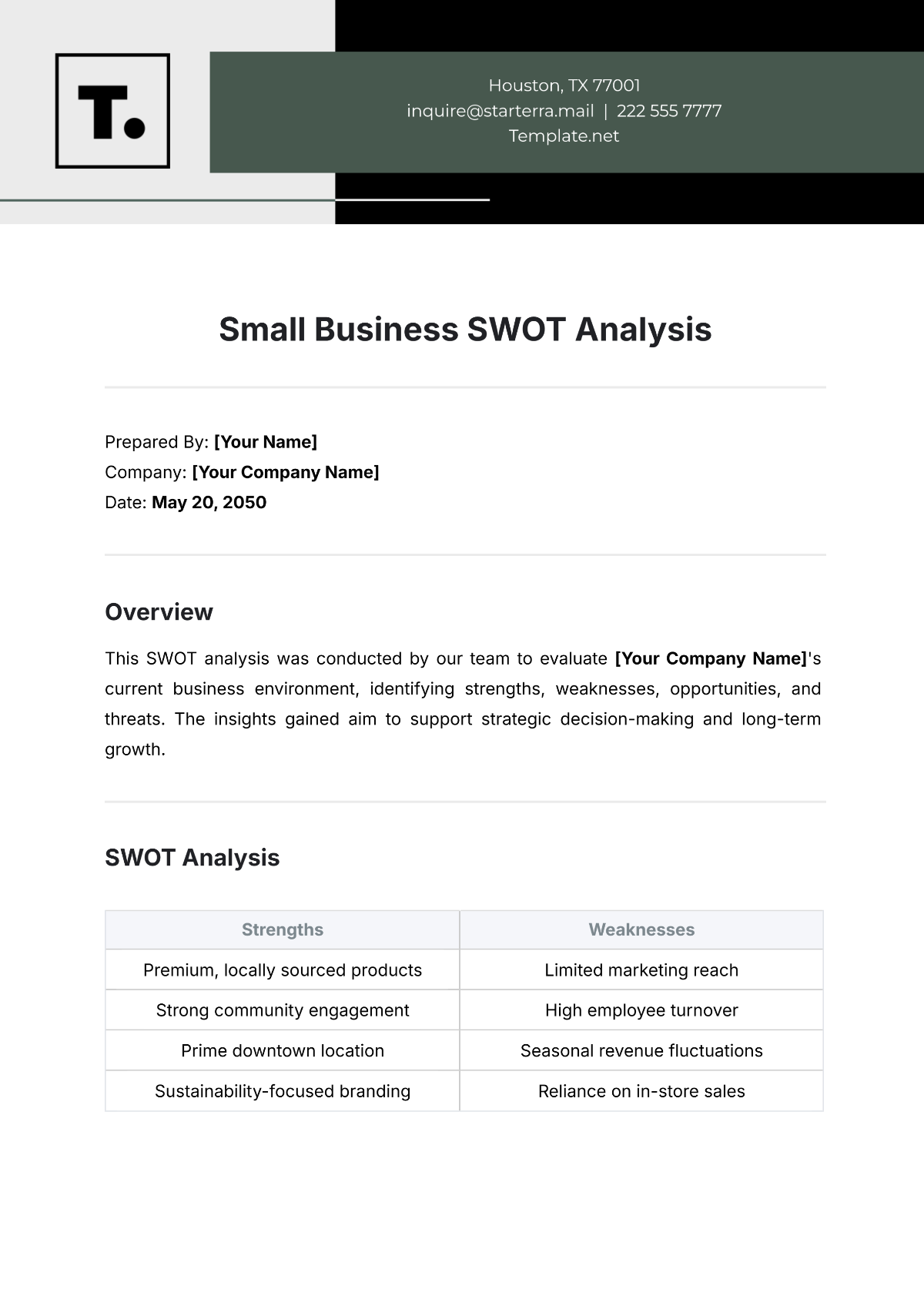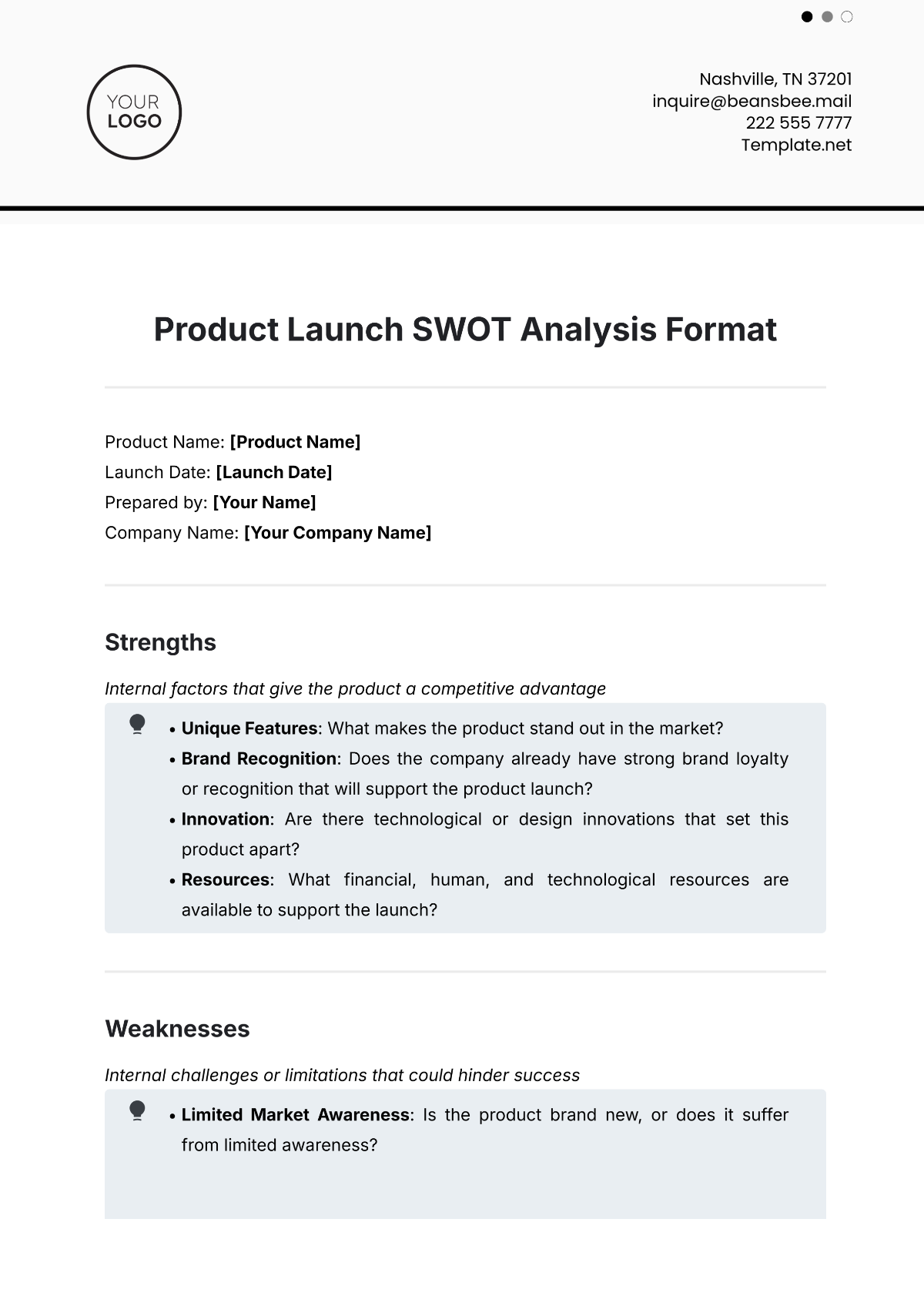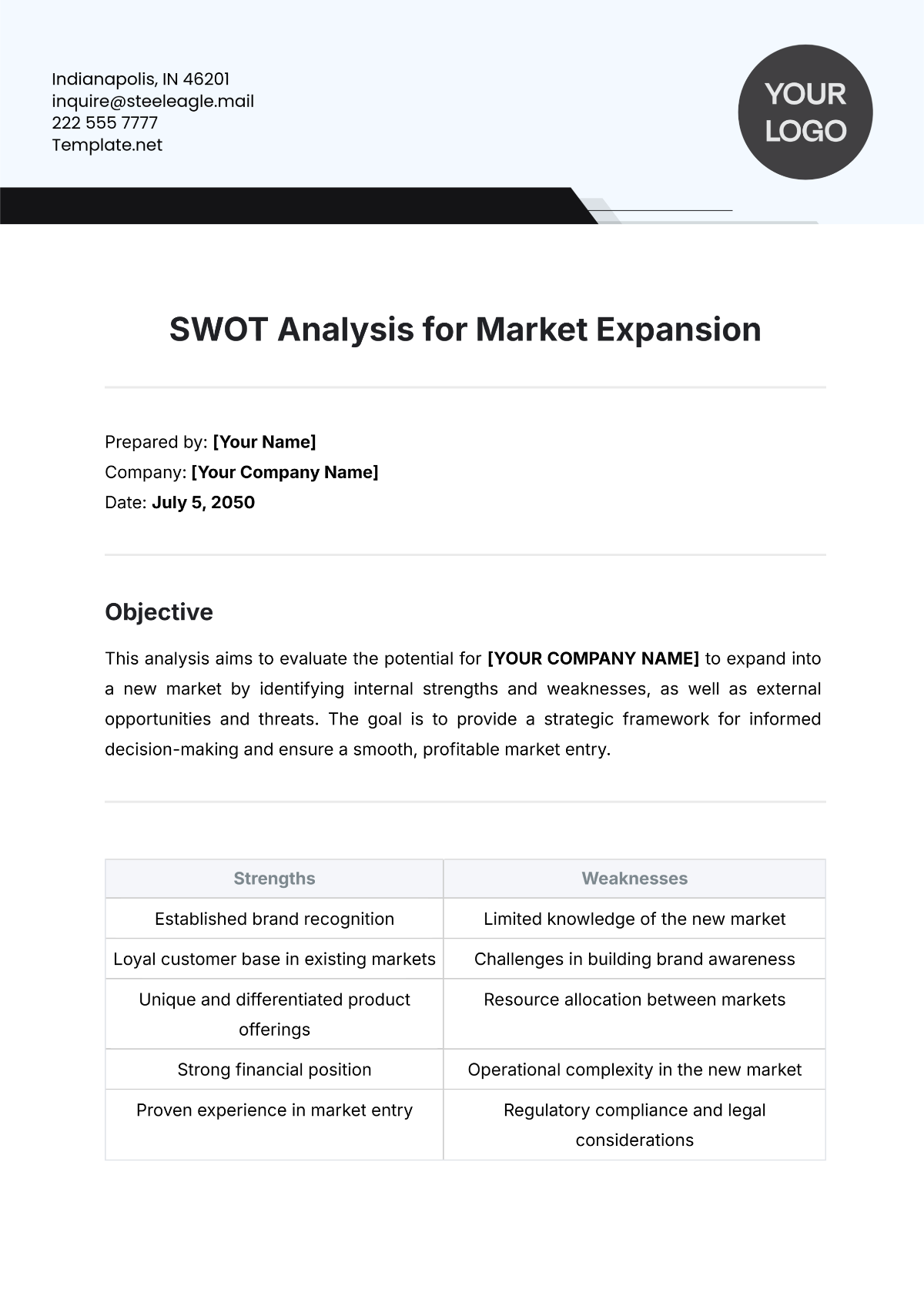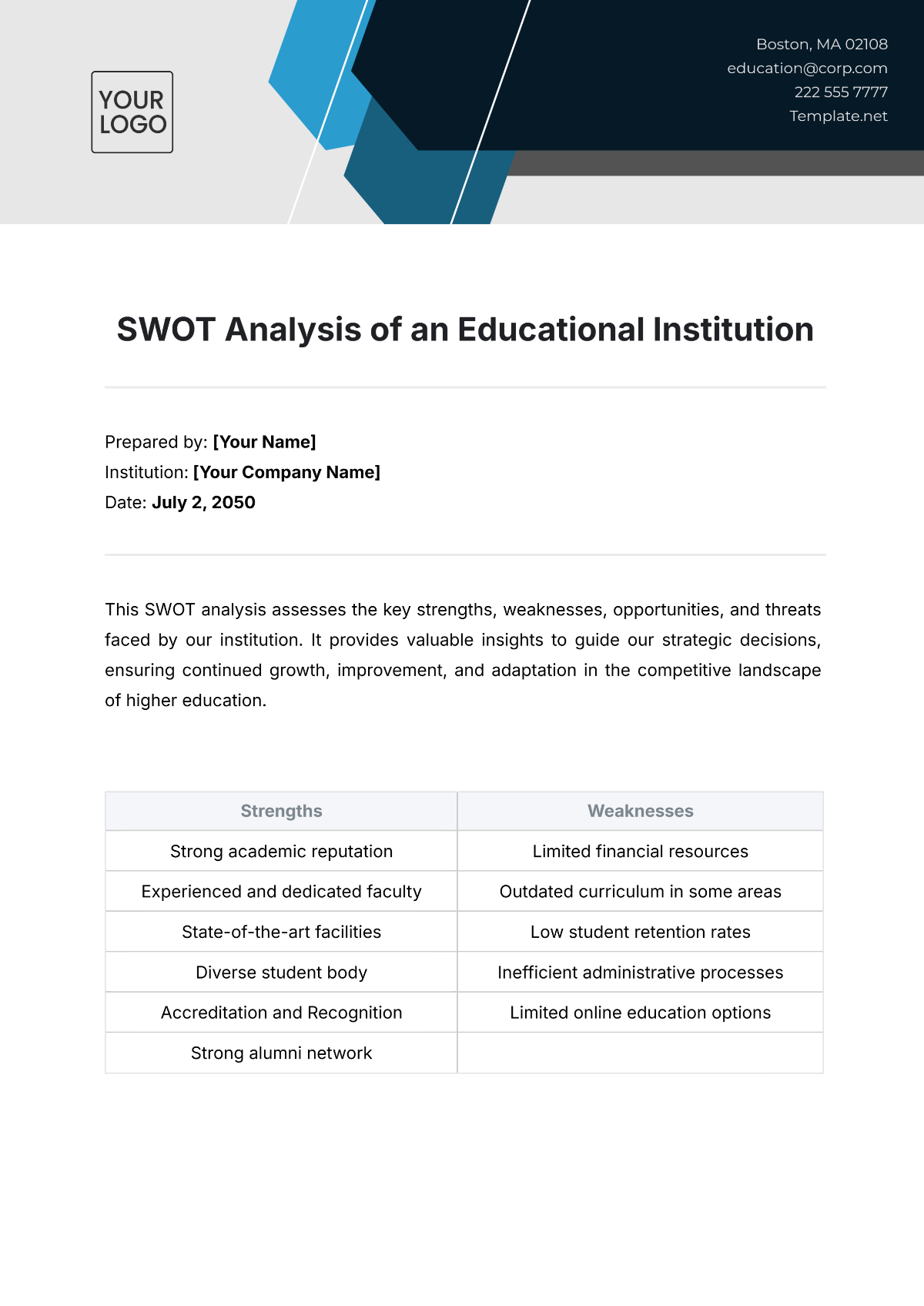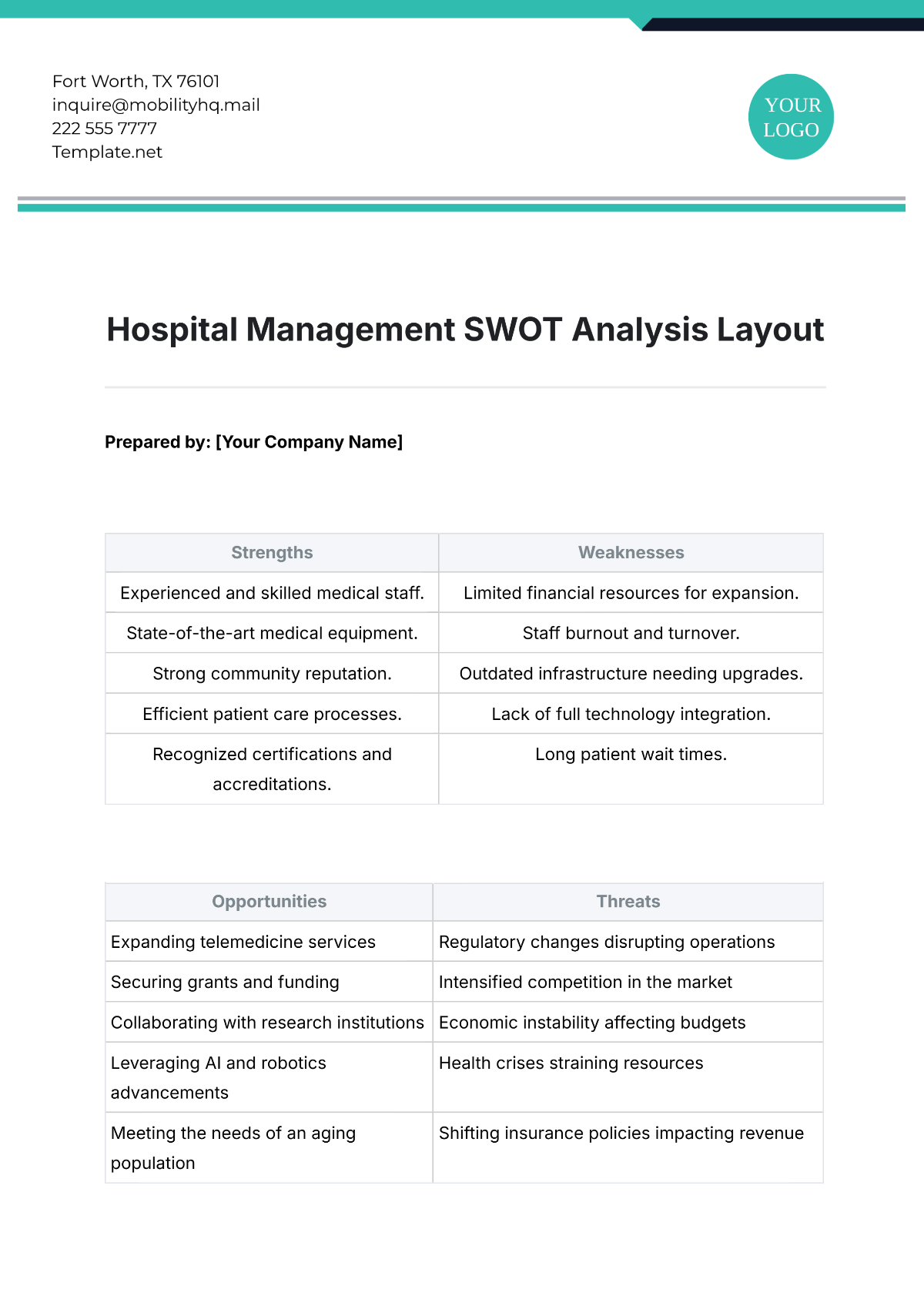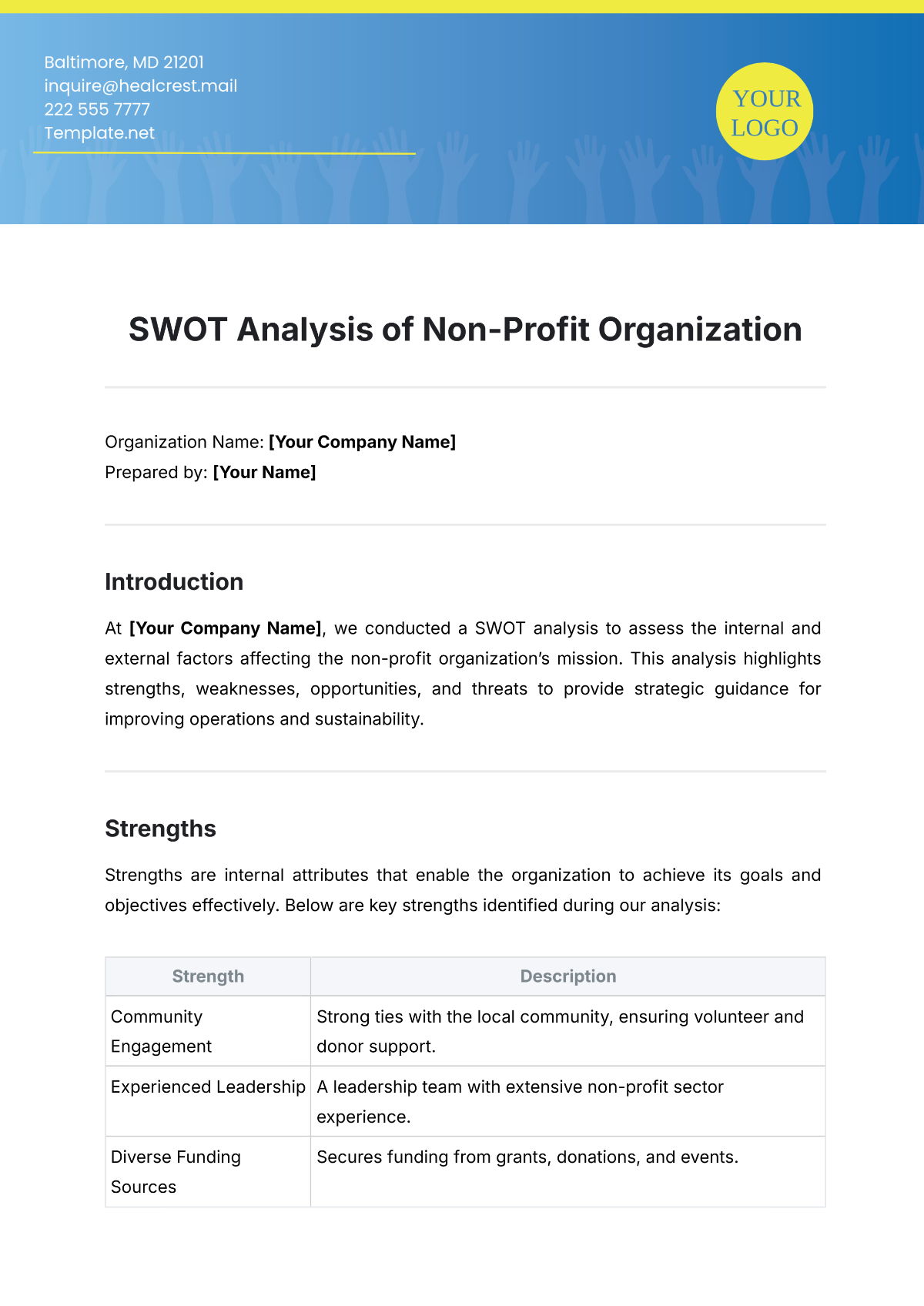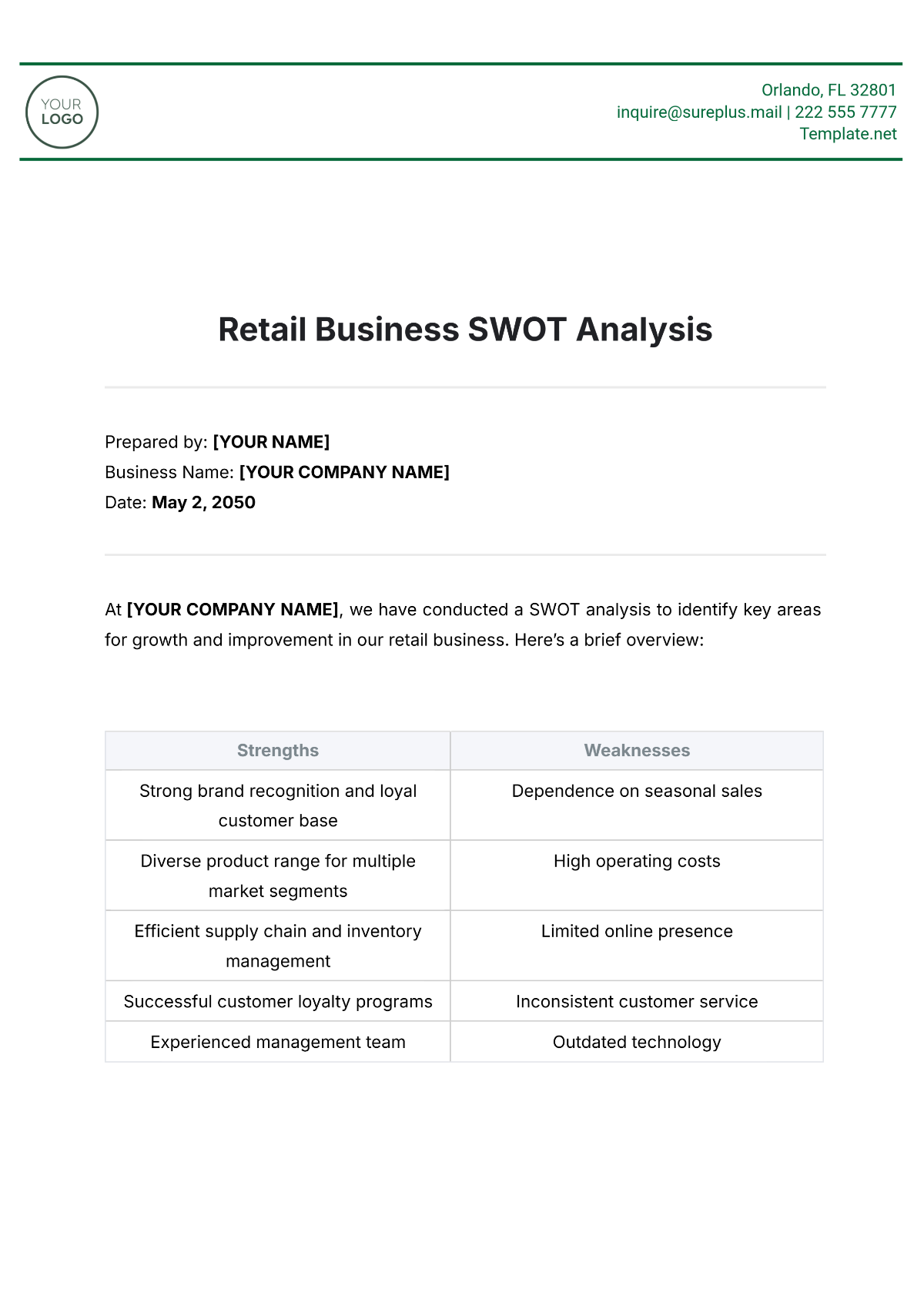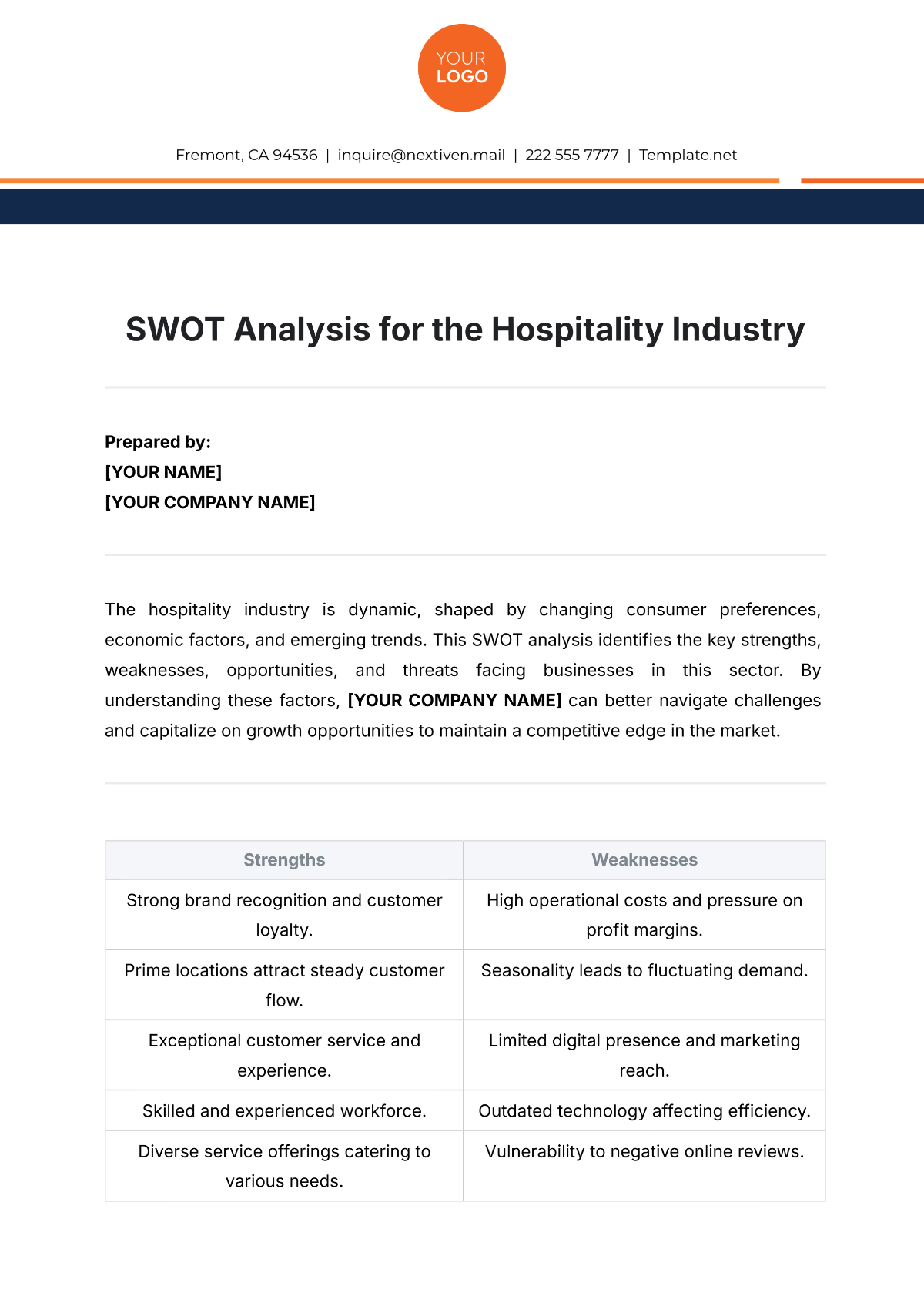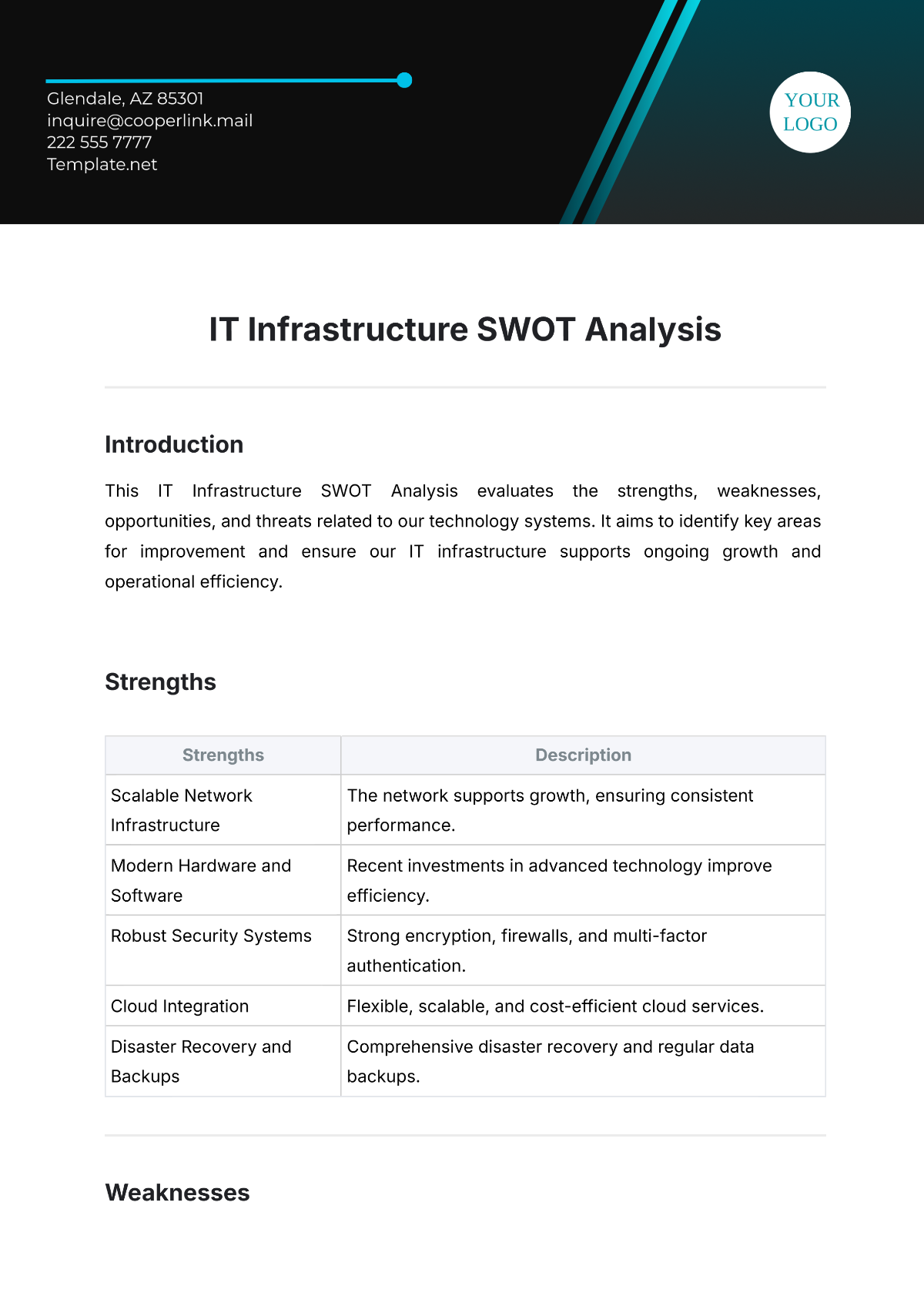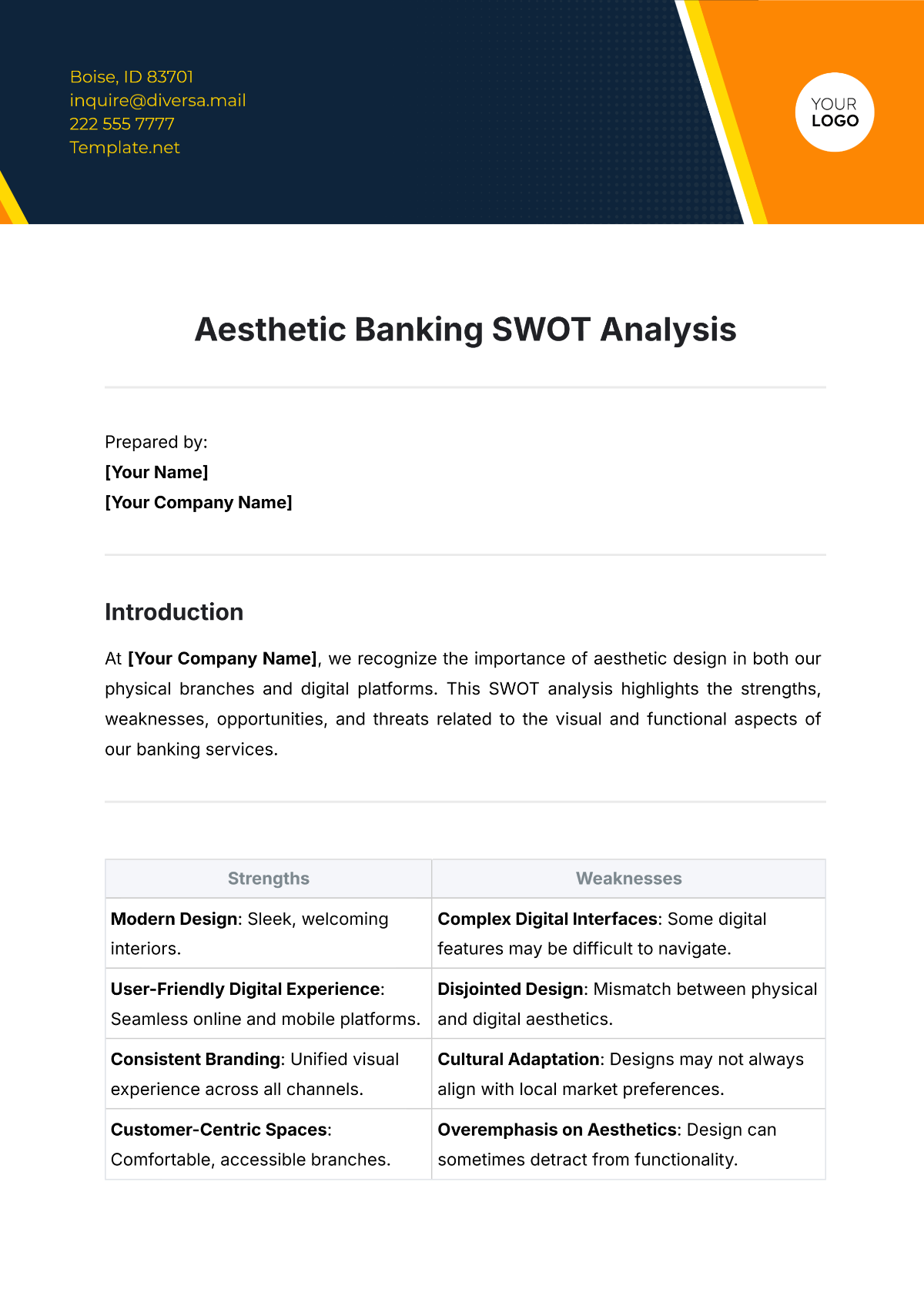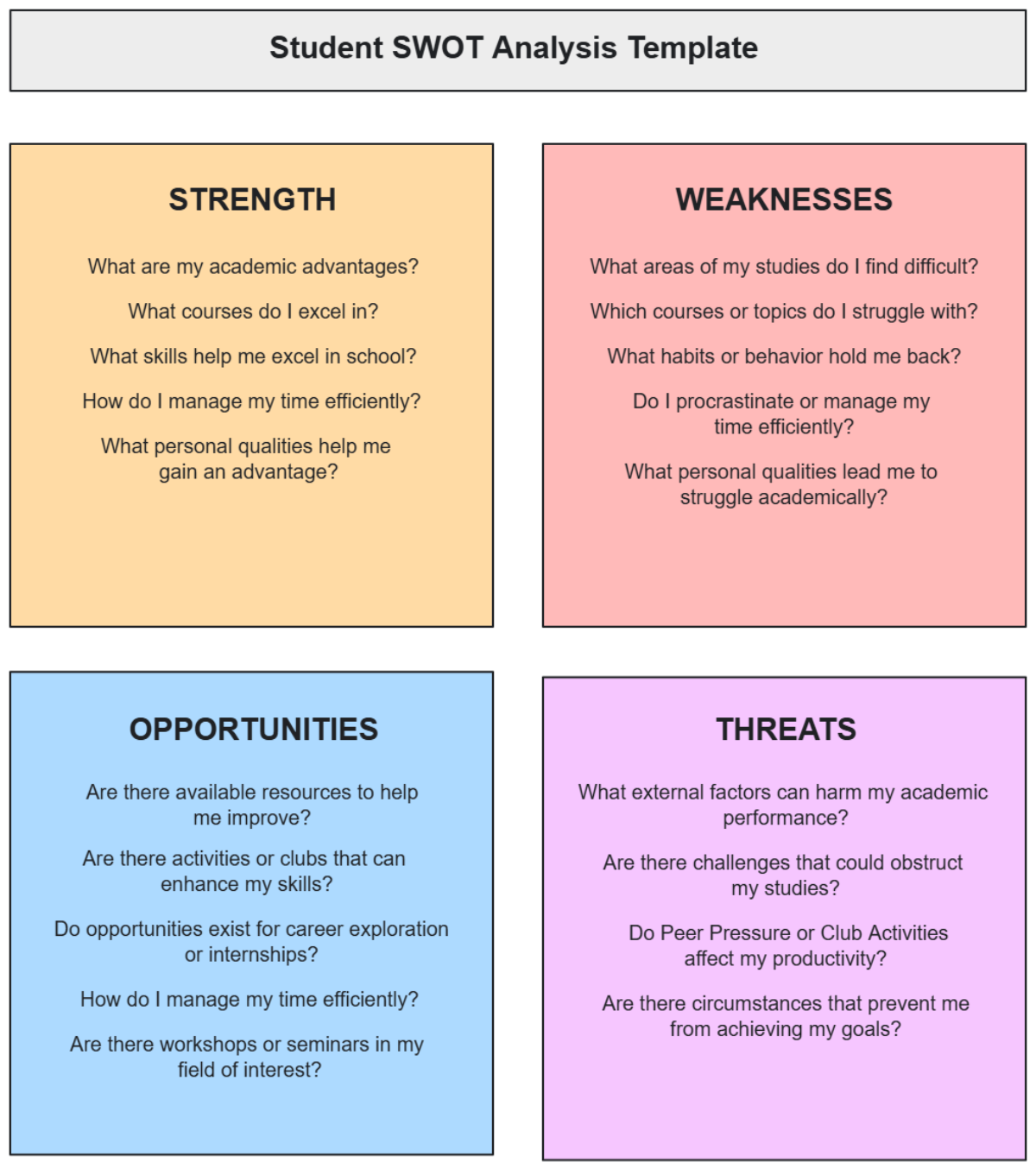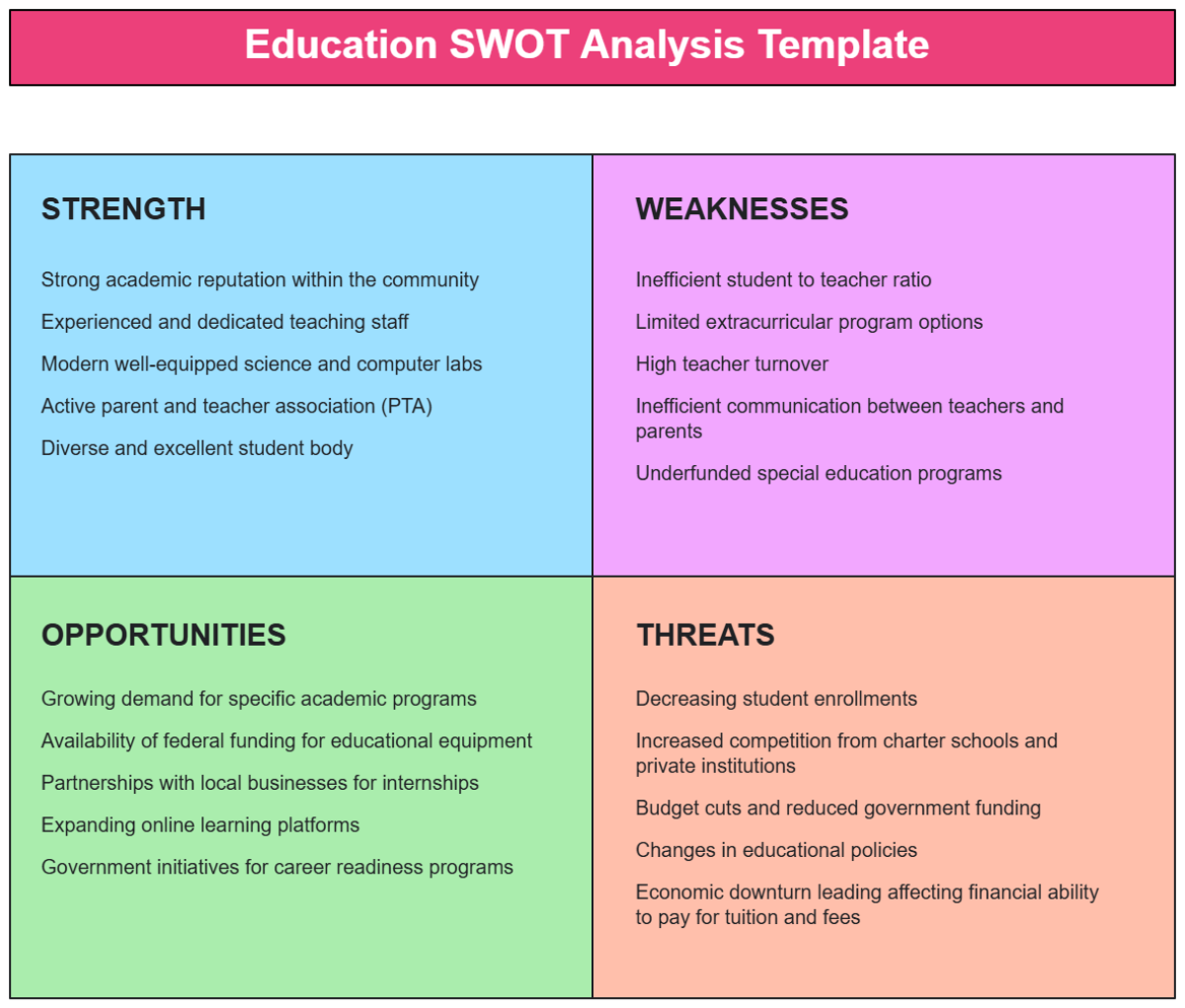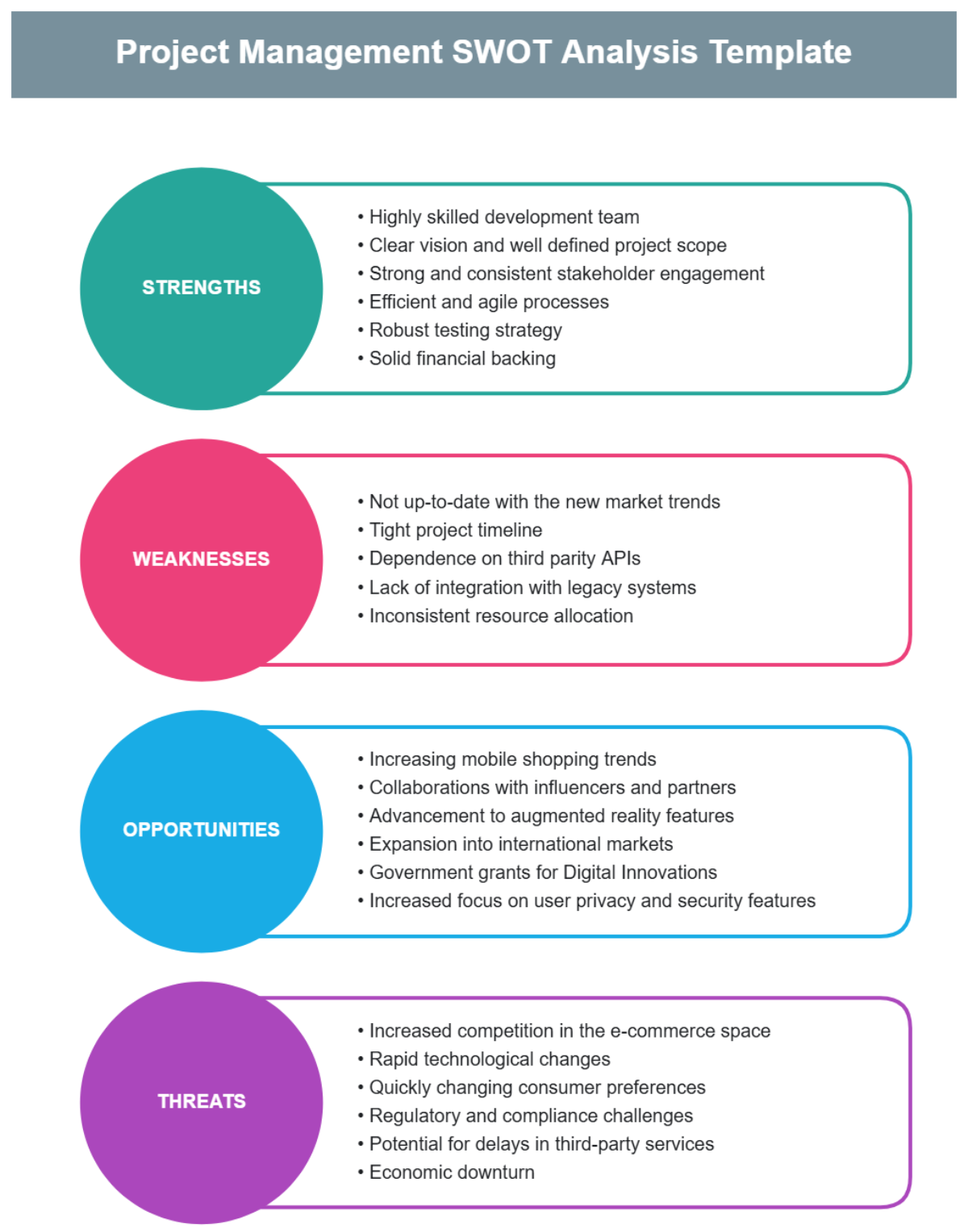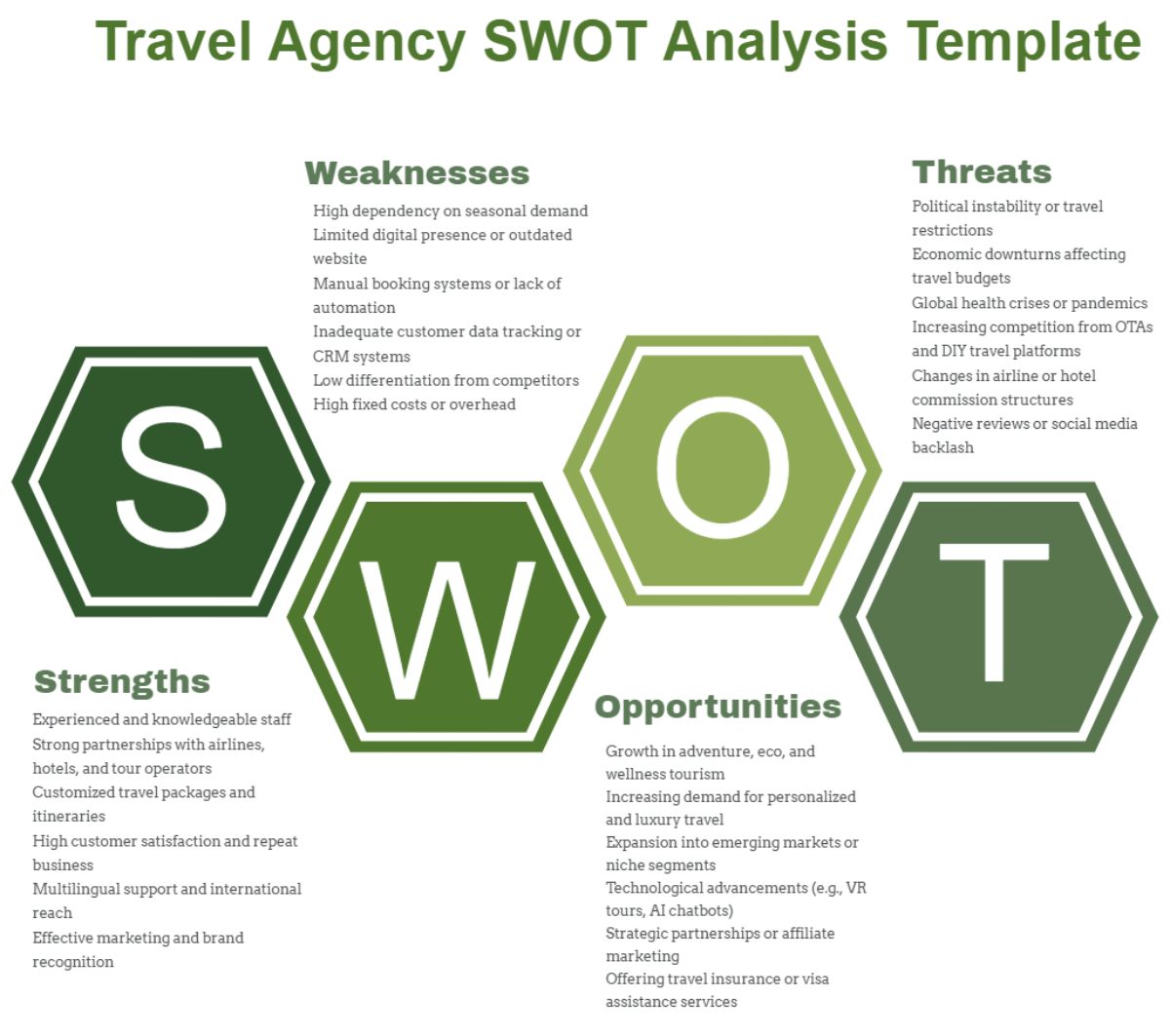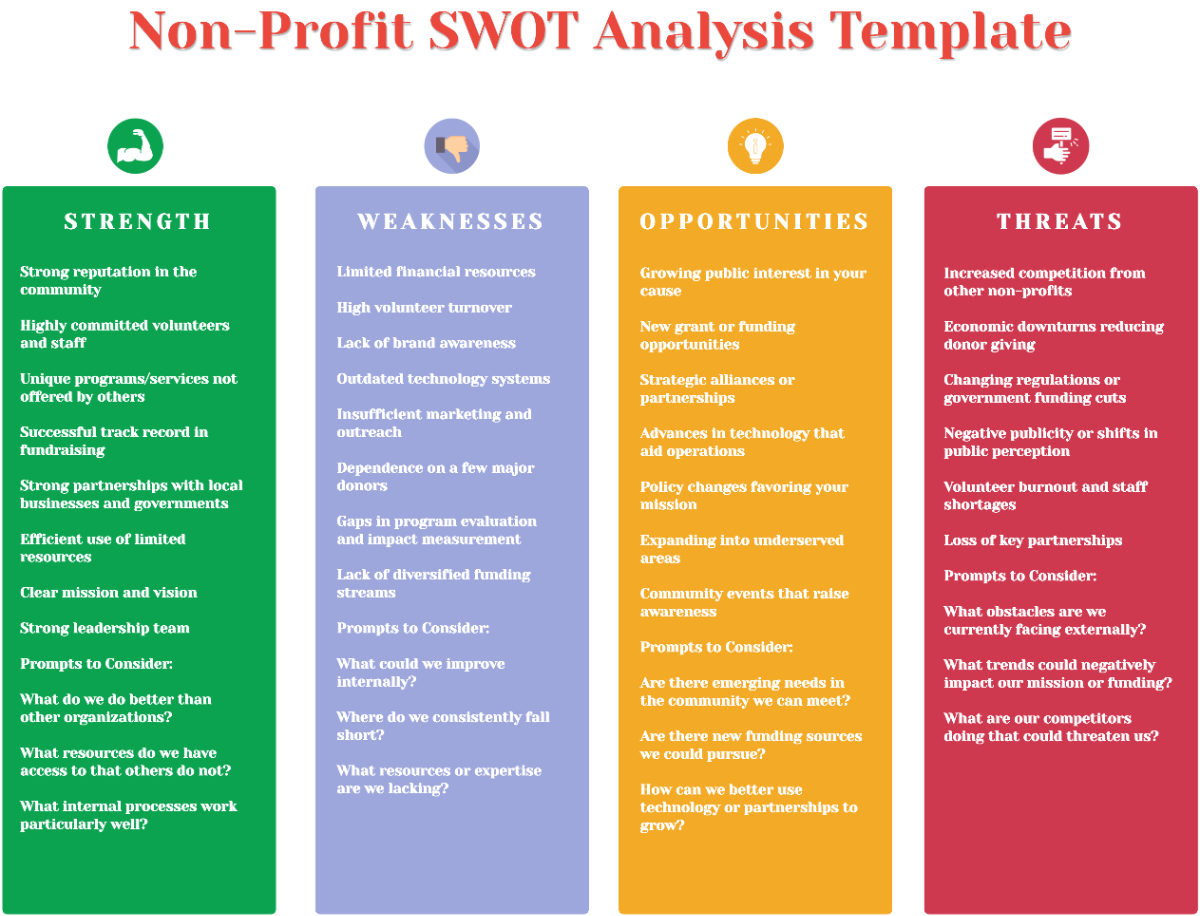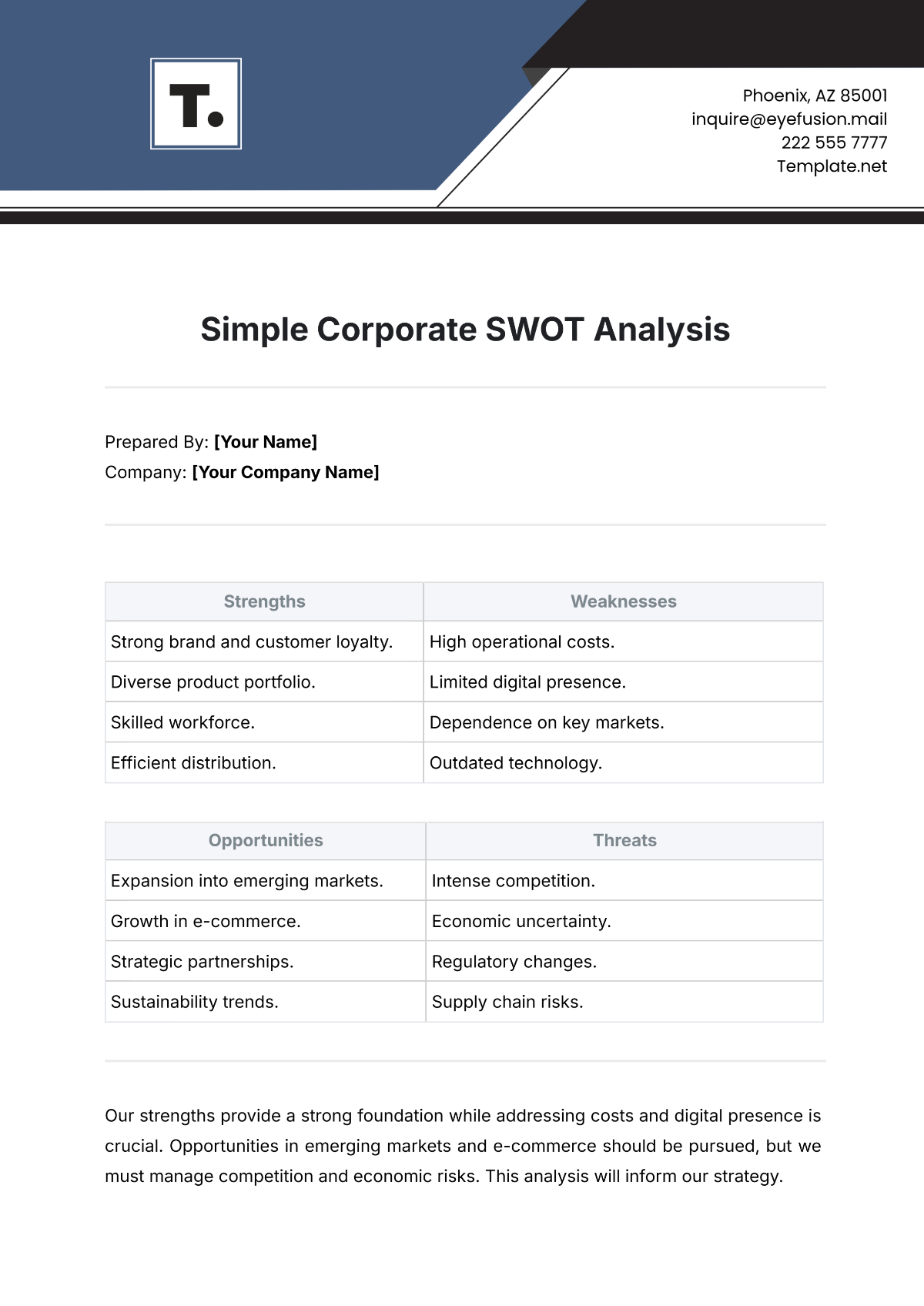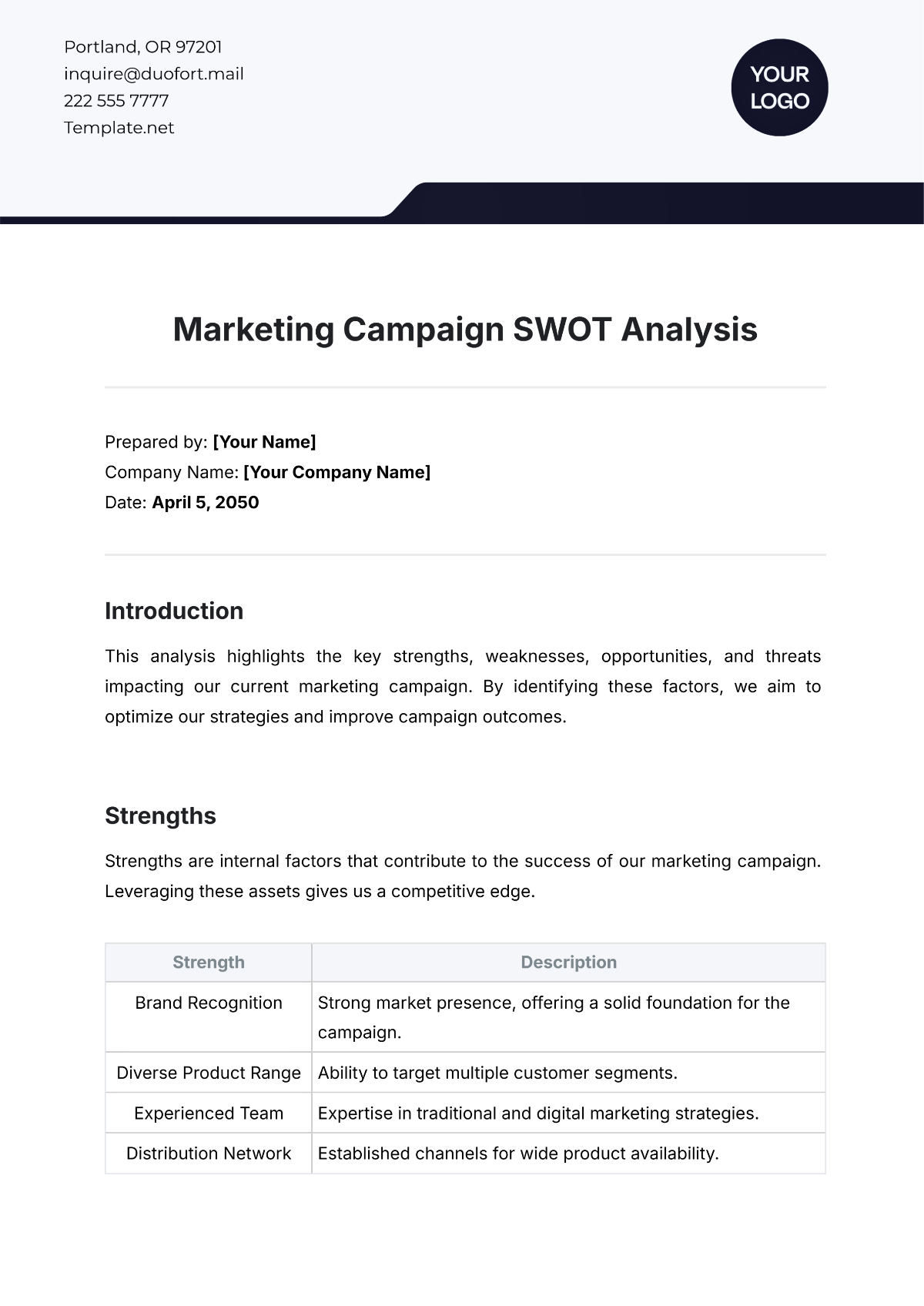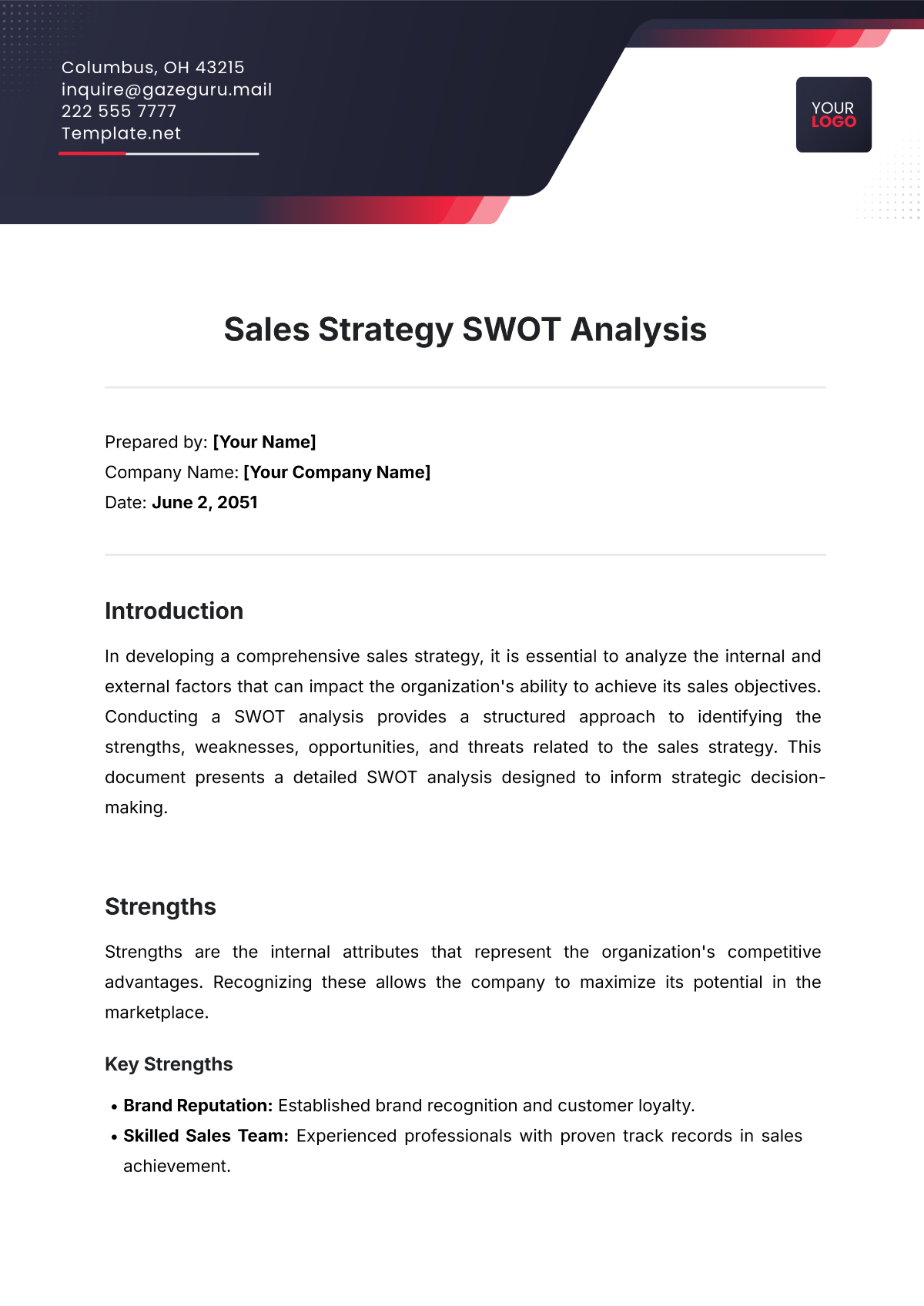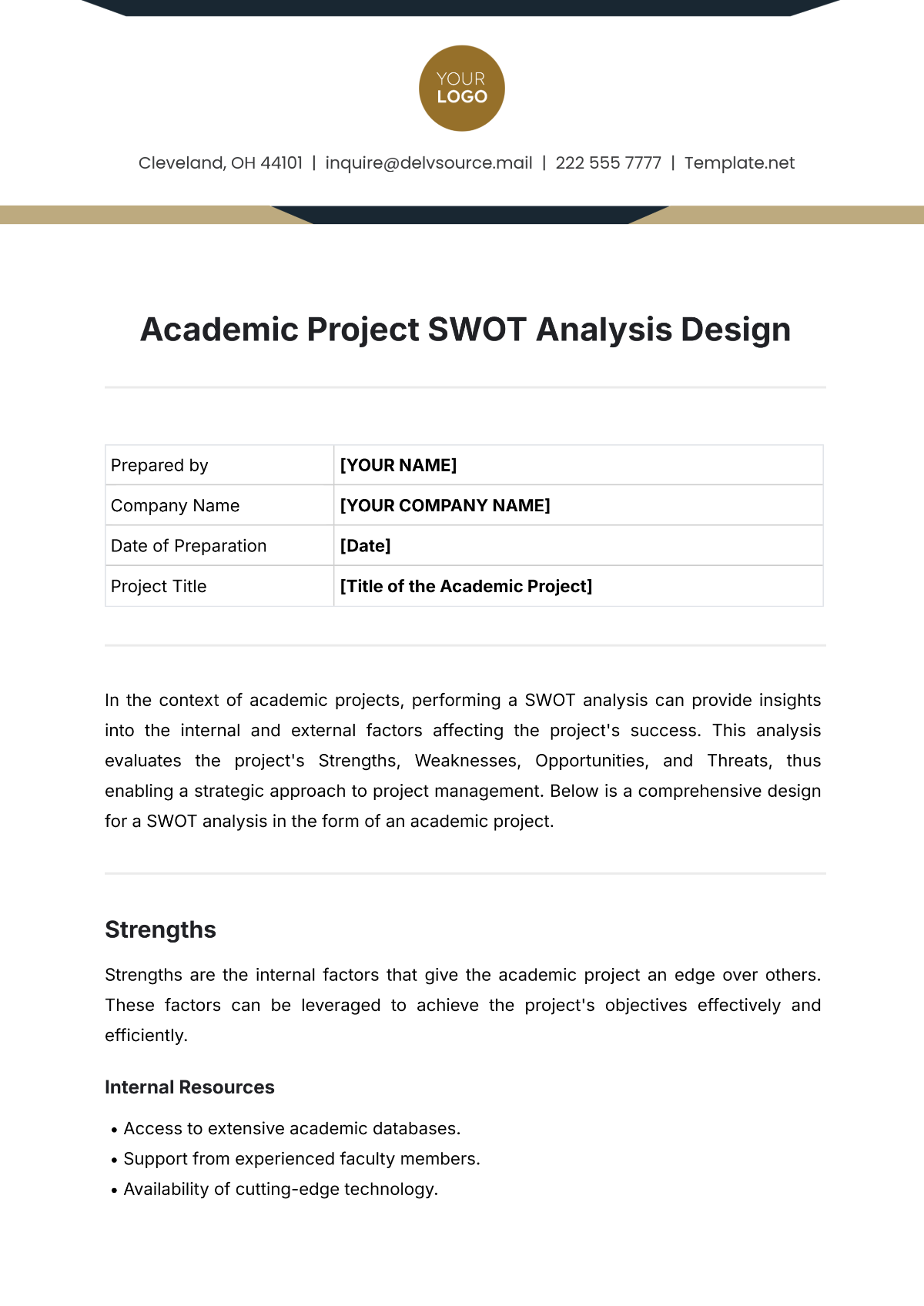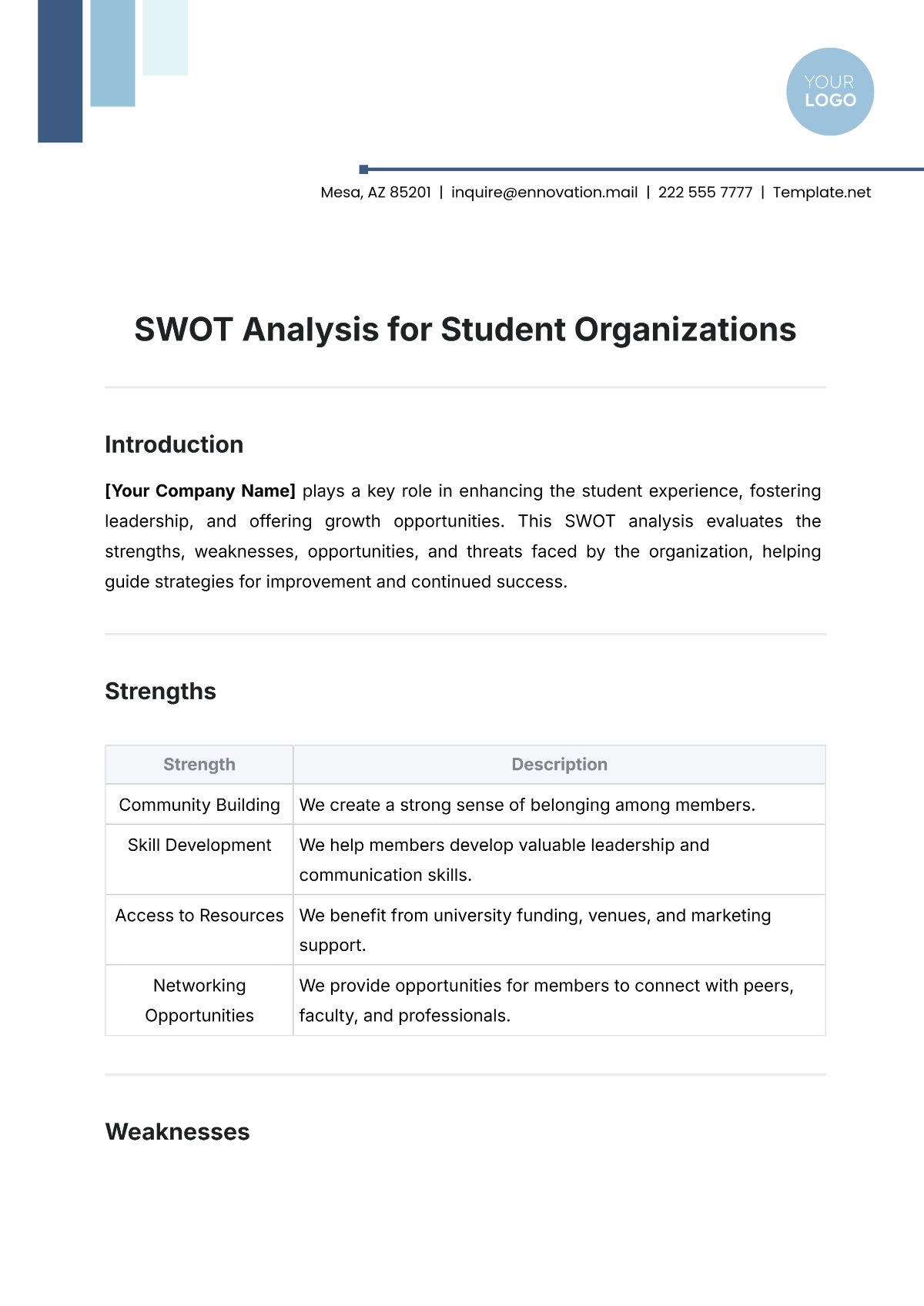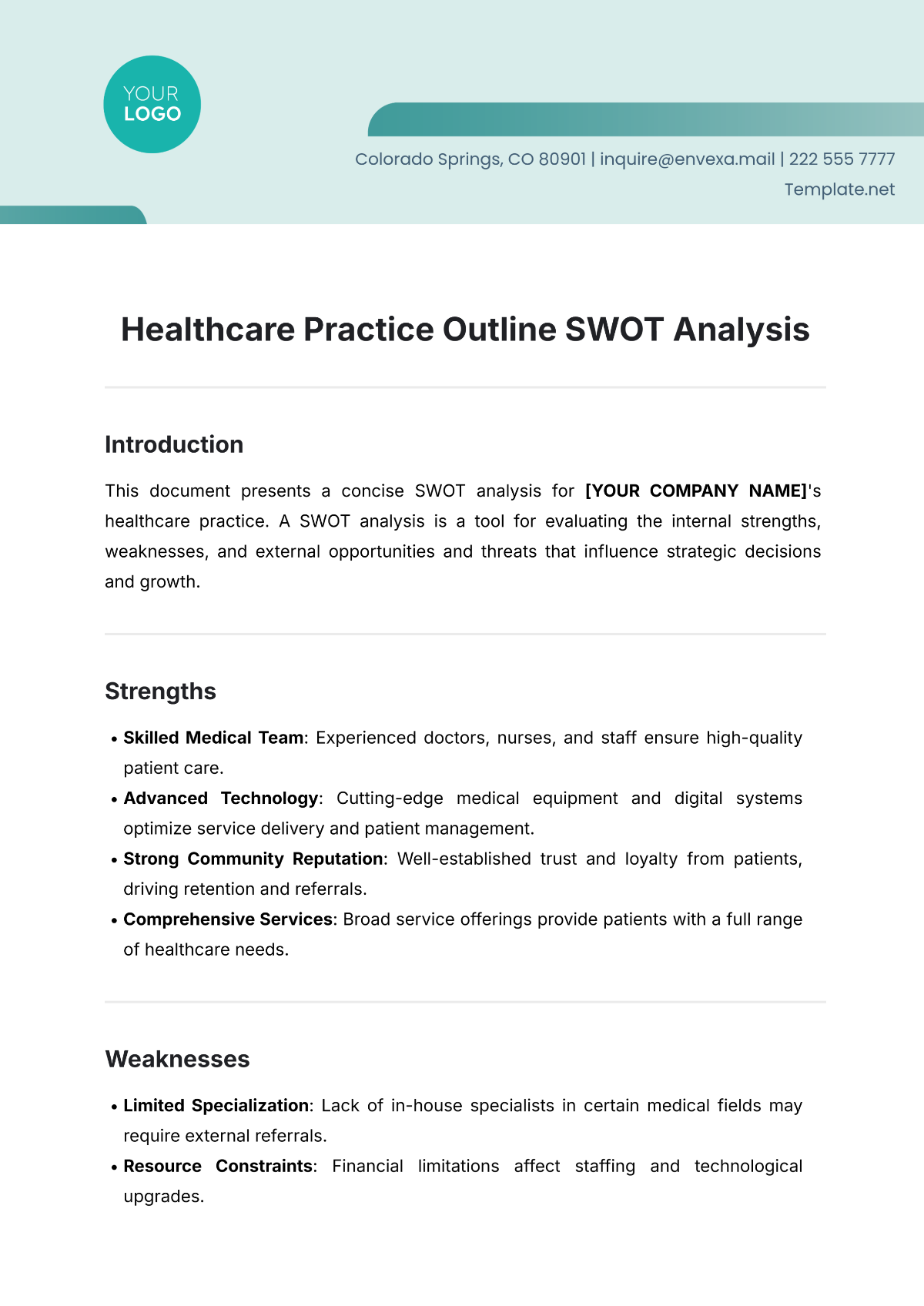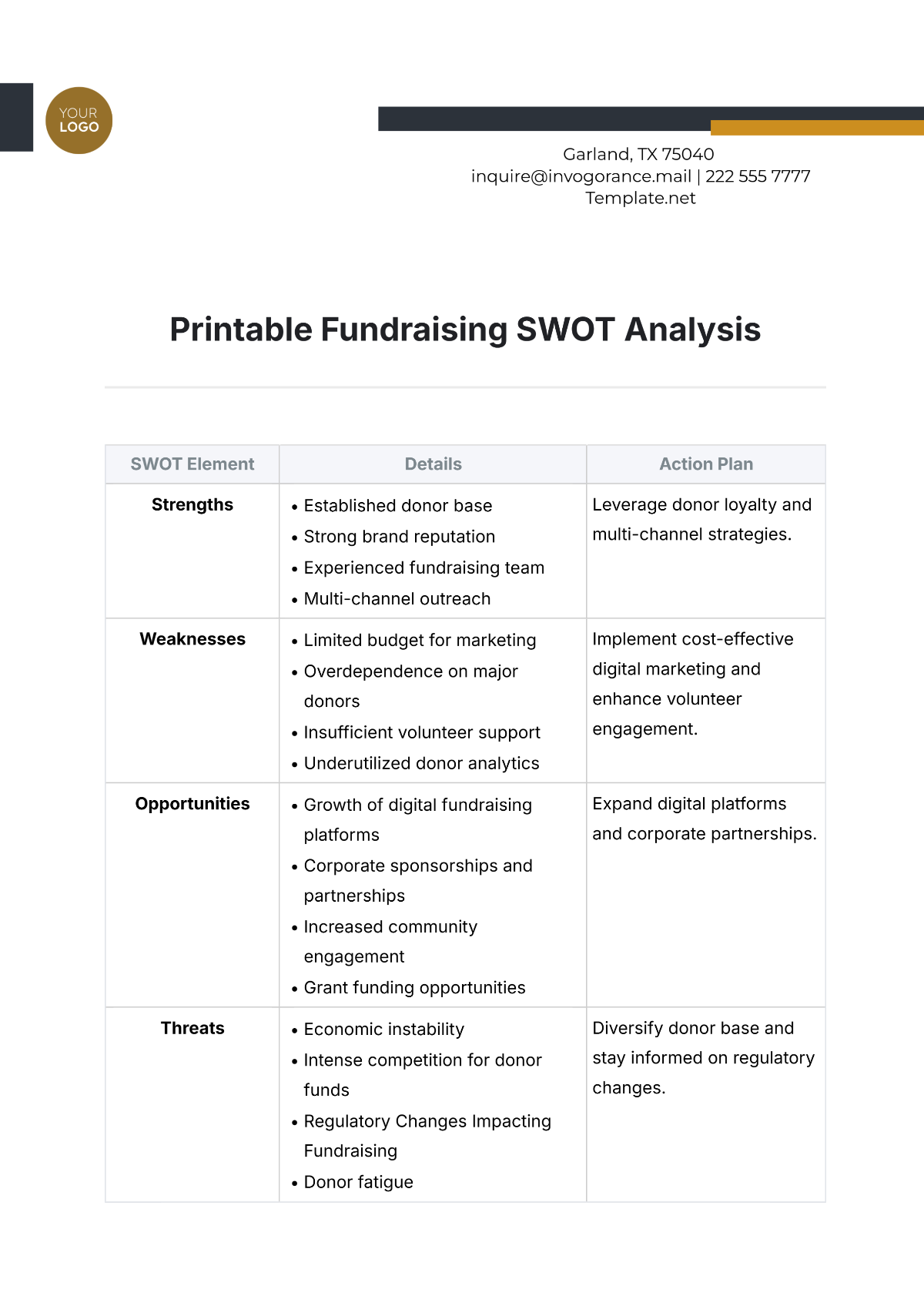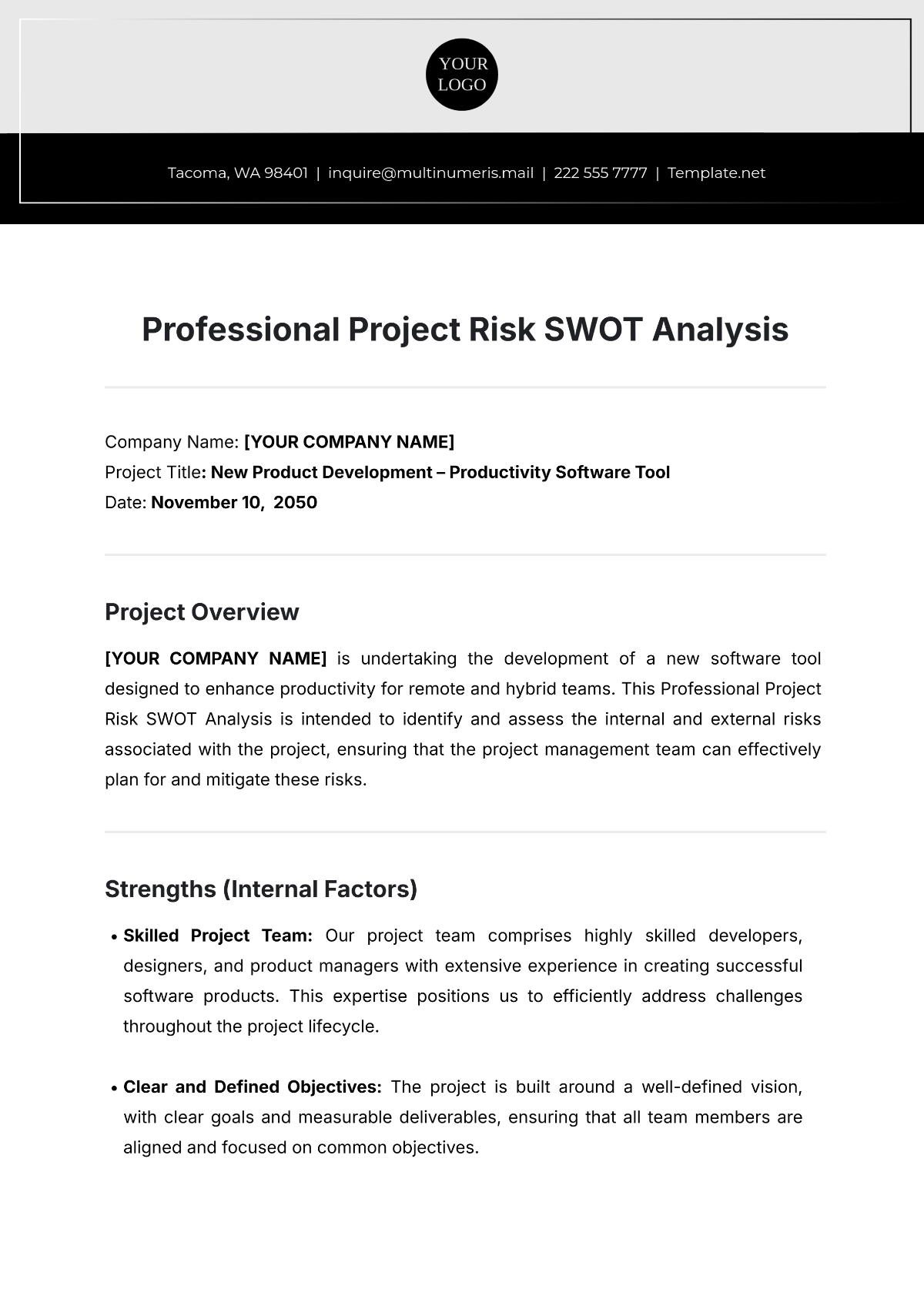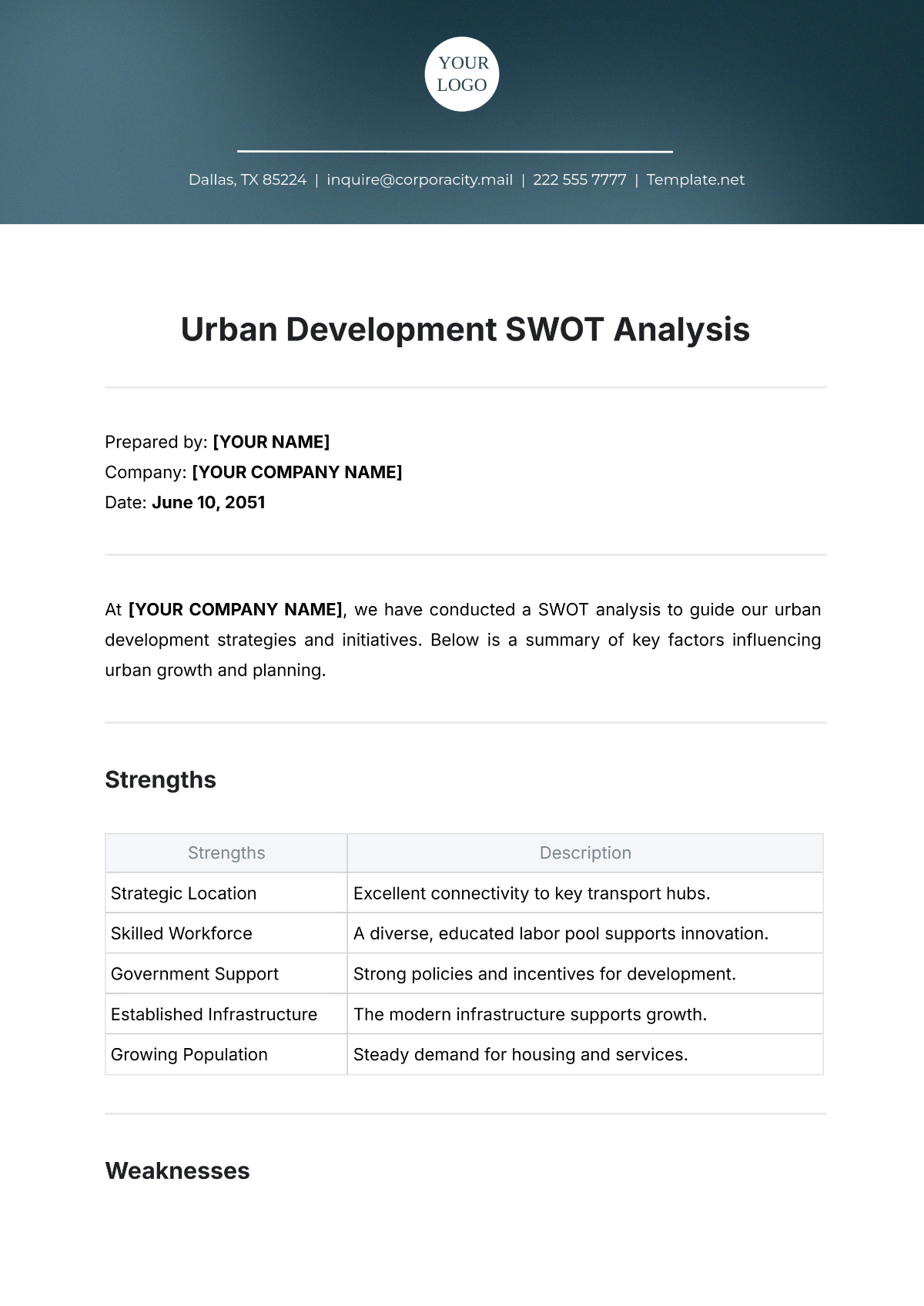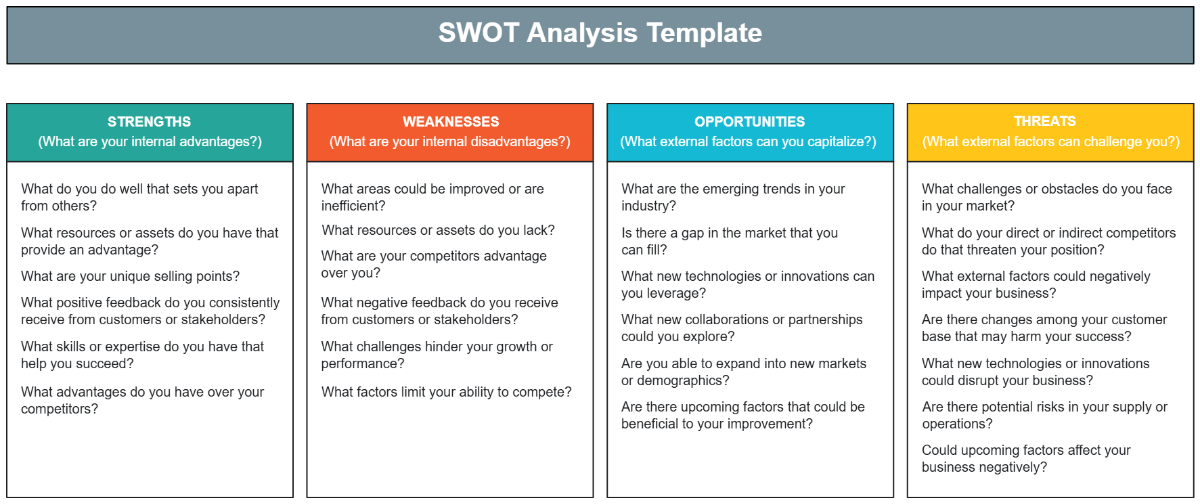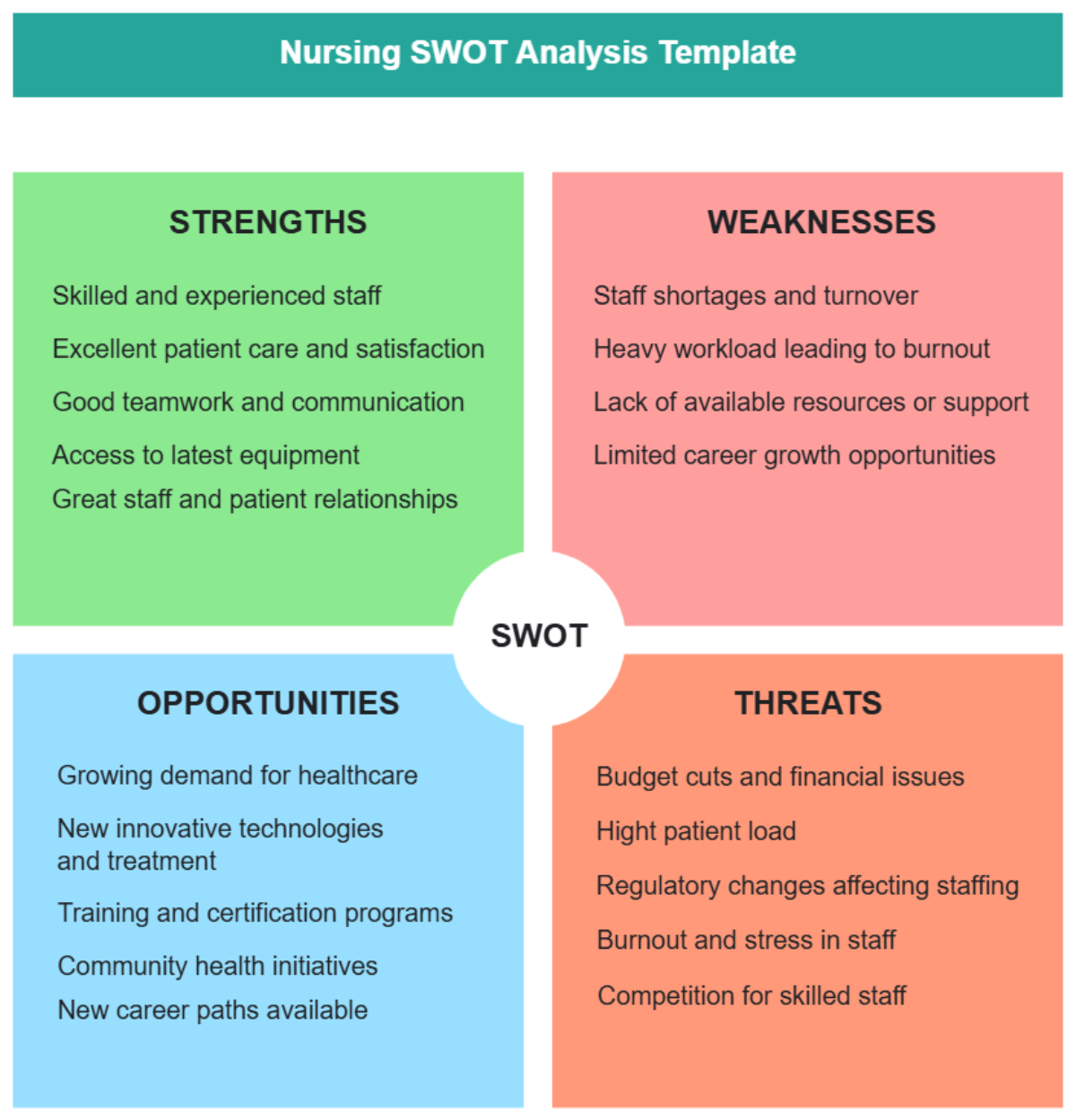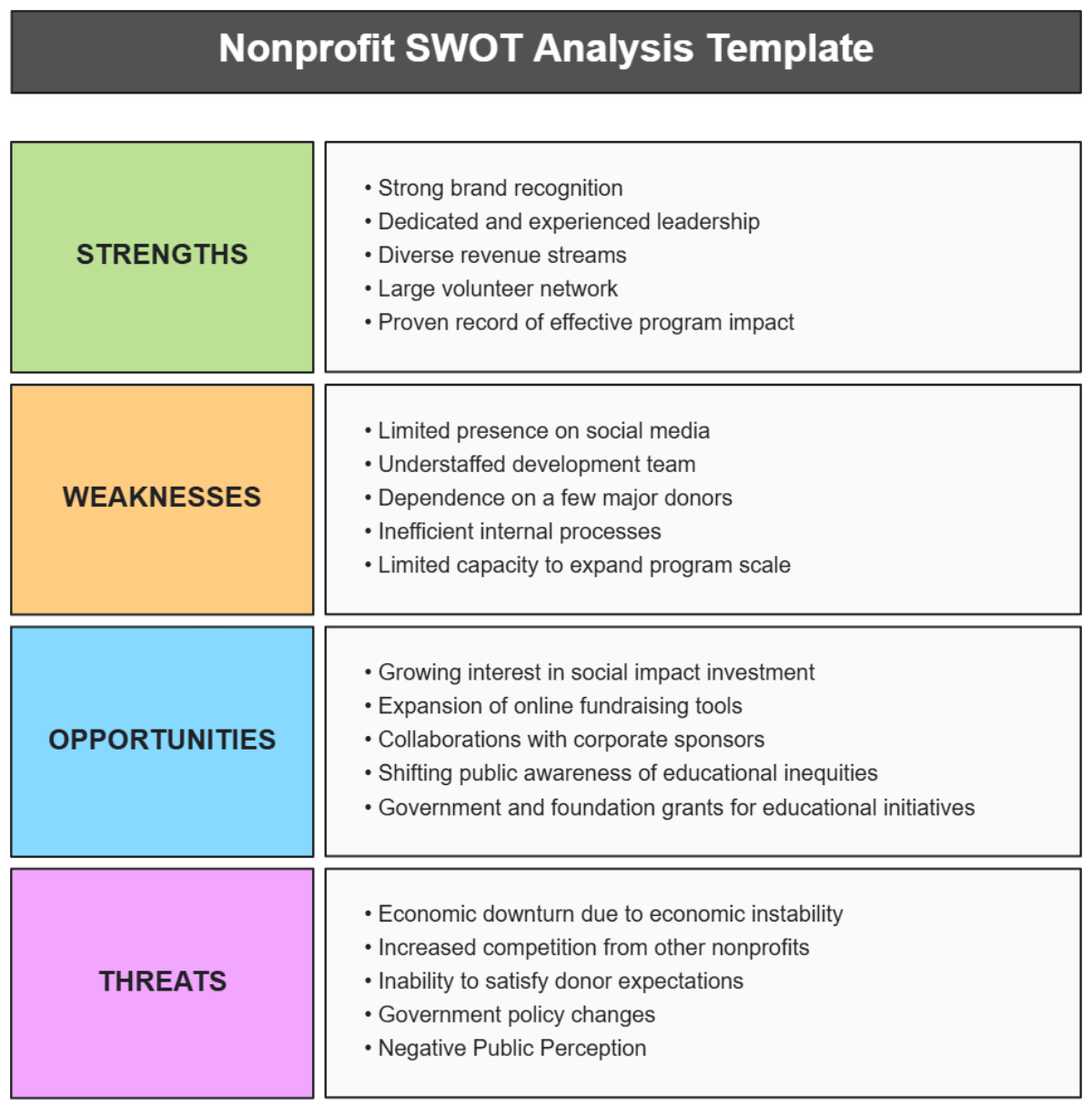Sales Swot Analysis Of Key Accounts
Introduction
In our continuous effort to evaluate and enhance our strategic sales initiatives, we have embarked on a comprehensive SWOT analysis focused on our key accounts. These accounts represent the cornerstone of our business, contributing significantly to our revenue and strategic market positioning. The objective of this analysis is to delve deep into the strengths, weaknesses, opportunities, and threats that define our relationship and performance metrics with these pivotal clients. By systematically examining these elements, we aim to identify actionable strategies that will solidify our competitive advantage, foster deeper relationships with these clients, and ultimately drive sustainable growth.
SWOT Analysis Overview
The SWOT analysis of our key accounts provides a structured overview of internal and external factors that impact our sales and client relationships. This analysis is crucial for understanding how to leverage our core strengths, address our critical weaknesses, seize emerging opportunities, and mitigate potential threats. The following table summarizes the key findings from our SWOT analysis:
Strengths (S) | Weaknesses (W) | Opportunities (O) | Threats (T) |
Strong relationships with 70% of key accounts, characterized by high satisfaction scores averaging 8.5 out of 10. | Limited digital sales channels, leading to slower response times compared to competitors. | Emerging market trends indicating a 15% annual growth in demand for our specialized services. | Competitive pressure from new entrants offering similar services at a lower price point. |
High product alignment with key account needs, evidenced by a 30% higher utilization rate than industry average. | Resource constraints in our customer service department, affecting account management capabilities for 20% of key accounts. | Opportunities for cross-selling, with potential to increase key account revenue by 20% based on preliminary analysis. | Changing regulatory environment that could impose additional compliance costs, impacting profit margins by up to 5%. |
Consistent sales growth of 10% year-over-year with key accounts, outpacing industry average of 7%. | Perception of being less innovative than competitors, as indicated in feedback from 15% of key accounts. | Strategic partnerships with technology providers could enhance our product offerings and account management efficiency. | Key accounts' shifting preferences towards more sustainable and eco-friendly products, not fully aligned with our current offerings. |
Strengths
Our SWOT analysis has unveiled several distinct strengths that underpin our competitive advantage and underscore our value proposition to key accounts. These strengths not only highlight our organization's capabilities but also reflect the deep trust and confidence our key clients place in us. By recognizing and building upon these strengths, we aim to further solidify our market position and foster enduring relationships with our key accounts.
Strong Relationships with Key Accounts
We boast strong, enduring relationships with 70% of our key accounts, evidenced by high satisfaction scores averaging 8.5 out of 10. This strength is a testament to our client-centric approach and our commitment to understanding and meeting our clients' needs. These relationships are built on a foundation of trust, consistent delivery on promises, and our ability to offer tailored solutions that truly resonate with our clients' business objectives. The depth of these relationships not only facilitates repeated business but also enhances our reputation in the industry, creating a virtuous cycle of referrals and new business opportunities.
High Product Alignment with Key Account Needs
Our products and services demonstrate a high degree of alignment with the needs of our key accounts, resulting in a 30% higher utilization rate compared to the industry average. This alignment is not coincidental but the result of a deliberate strategy to engage closely with our clients, understand their challenges and opportunities, and develop solutions that directly address their unique requirements. Our ability to offer highly relevant products has not only cemented our value to these accounts but also minimized churn, contributing to our stable and growing revenue base.
Consistent Sales Growth
The consistent sales growth of 10% year-over-year with our key accounts, outpacing the industry average of 7%, underscores our ability to not only retain valuable clients but also to expand our engagements with them. This growth is reflective of our strategic focus on delivering exceptional value, our agility in responding to market and client changes, and our ongoing investment in product and service innovation. It signifies our clients' recognition of our value proposition and their willingness to deepen their engagement with us, further entrenching our position as a preferred partner.
Weaknesses
Our SWOT analysis has identified several critical weaknesses that could potentially hinder our ability to fully capitalize on market opportunities and maintain our competitive edge. Addressing these weaknesses is paramount to ensuring our long-term success and our ability to deliver superior value to our key accounts. By openly acknowledging and strategically addressing these areas, we can strengthen our business model and enhance our overall market positioning.
Limited Digital Sales Channels
Our analysis has highlighted limited digital sales channels as a significant weakness, leading to slower response times compared to our competitors. In an era where digital engagement has become a cornerstone of business operations, our lag in this area could impede our ability to quickly and effectively meet client needs, impacting client satisfaction and potentially leading to lost sales opportunities. This limitation underscores the urgent need for us to invest in and expand our digital capabilities, ensuring that we can offer a seamless, efficient, and responsive sales experience that meets the expectations of today’s digitally savvy clients.
Resource Constraints in Customer Service
Resource constraints within our customer service department have been identified as affecting our account management capabilities for 20% of key accounts. This situation can lead to delays in resolving client issues, inconsistent service levels, and ultimately, a deterioration in client satisfaction and loyalty. The root of this weakness lies in our current operational capacity, which has not scaled adequately with our growth. Addressing this weakness requires a strategic review of our customer service operations, including potential investments in additional personnel, training, and technology solutions to enhance service delivery and client engagement.
Perception of Being Less Innovative
Feedback from 15% of our key accounts suggests a perception that we are less innovative than our competitors. This perception, whether based in reality or not, can significantly impact our market standing and our ability to attract and retain clients who prioritize innovation as a key decision-making criterion. It is imperative that we address this by amplifying our communication around existing innovations, investing in research and development to accelerate innovation, and more effectively engaging our key accounts in the innovation process. By doing so, we can shift perceptions and reaffirm our commitment to delivering cutting-edge solutions that meet the evolving needs of our clients.
Opportunities
The SWOT analysis has illuminated several significant opportunities that, if capitalized on, could propel our business forward and deepen our engagement with key accounts. These opportunities emerge from both market trends and our internal capabilities, offering paths to expand our revenue streams, enhance our product offerings, and solidify our competitive positioning. By strategically leveraging these opportunities, we can accelerate our growth and strengthen our relationships with key accounts.
Emerging Market Trends
Our analysis has identified emerging market trends indicating a 15% annual growth in demand for our specialized services. This trend presents a substantial opportunity for us to expand our market share and reinforce our leadership in the industry. By aligning our business strategy with these trends, we can anticipate and meet the evolving needs of our key accounts, ensuring that we remain their partner of choice. Capitalizing on this opportunity requires us to stay ahead of market developments, continuously innovate our service offerings, and proactively engage our clients with solutions that address their future challenges and opportunities.
Cross-selling or Upselling Potential
The potential for cross-selling or upselling additional products or services to our key accounts has been preliminarily estimated to increase key account revenue by 20%. This opportunity arises from our deep understanding of our clients' businesses and the strong relationships we have built over time. By leveraging these insights and relationships, we can identify unmet needs or areas where our additional offerings can provide value, thereby enhancing our revenue while delivering increased value to our clients. Implementing a structured approach to cross-selling and upselling—supported by targeted training for our sales teams and tailored marketing initiatives—can unlock this potential and drive significant growth.
Strategic Partnerships with Technology Providers
The opportunity to establish strategic partnerships with technology providers could significantly enhance our product offerings and account management efficiency. Such partnerships would enable us to integrate advanced technological solutions into our service portfolio, offering our clients cutting-edge innovations that improve their operations and competitive edge. Moreover, these collaborations could streamline our internal processes, improving efficiency and scalability. To seize this opportunity, we should identify potential technology partners whose capabilities complement our strategic objectives, and explore collaborative models that benefit both our clients and our operational goals.
Threats
The SWOT analysis has also shed light on several threats that could potentially undermine our efforts to grow and maintain our position in the market. These threats stem from both the competitive landscape and broader external factors that could impact our key accounts and, by extension, our business. Recognizing and mitigating these threats is crucial for safeguarding our future growth and ensuring the sustainability of our key account relationships.
Competitive Pressure from New Entrants
One significant threat identified is the competitive pressure from new entrants offering similar services at a lower price point. This development poses a risk to our market share and could lead to price erosion, affecting our profitability. New entrants can often bring fresh perspectives and innovative solutions that appeal to cost-sensitive clients. To counter this threat, we must emphasize our value proposition beyond price, focusing on the quality, reliability, and unique benefits of our offerings. Additionally, we should continue to innovate and improve our services to maintain a clear competitive edge and justify our pricing strategy.
Changing Regulatory Environment
The changing regulatory environment presents another threat that could impose additional compliance costs, potentially impacting our profit margins by up to 5%. Regulatory changes can affect not only our operational costs but also the way we and our key accounts do business. Staying ahead of these changes requires a proactive approach to compliance and regulatory affairs, including investing in legal expertise and compliance infrastructure. By doing so, we can not only minimize the impact on our operations but also position ourselves as a trusted advisor to our key accounts, helping them navigate these changes as well.
Key Accounts' Shifting Preferences
Lastly, our key accounts' shifting preferences towards more sustainable and eco-friendly products represent a threat not fully aligned with our current offerings. This shift reflects broader market trends and consumer demands for corporate responsibility and environmental stewardship. Failing to adapt to these preferences could result in a misalignment with our clients' values and business objectives, potentially jeopardizing our relationships. To address this threat, we need to accelerate our sustainability initiatives, incorporating eco-friendly practices and products into our portfolio. Engaging our key accounts in these efforts can also strengthen our relationships, demonstrating our commitment to values that matter to them.
Recommendations
Based on the SWOT analysis of our key accounts, several strategic recommendations emerge as essential for reinforcing our strengths, addressing our weaknesses, capitalizing on opportunities, and mitigating threats. These recommendations are designed to enhance our competitive positioning, deepen our relationships with key accounts, and drive sustainable growth. Implementing these strategies will require focused effort and coordination across our organization.
Enhance Digital Sales Channels: Invest in and expand our digital sales platforms to improve efficiency and responsiveness, meeting the expectations of digitally savvy clients.
Strengthen Customer Service Resources: Allocate additional resources to customer service to enhance account management capabilities and improve client satisfaction.
Accelerate Innovation: Intensify our focus on research and development to foster innovation, addressing the perception of being less innovative than competitors.
Leverage Cross-selling and Upselling Opportunities: Develop targeted training and marketing initiatives to maximize revenue from existing key accounts through cross-selling and upselling.
Pursue Strategic Technology Partnerships: Identify and engage with technology providers to enhance our product offerings and operational efficiency.
Adopt Sustainability Initiatives: Integrate sustainable and eco-friendly practices and products into our offerings to align with key accounts' shifting preferences.
Implementation Plan
The following table outlines the steps, timeline, and responsibilities for implementing the recommended strategies:
Step | Timeline | Responsibilities |
Evaluate and select digital sales platforms | Q1 - Q2 | Sales and Marketing Departments |
Hire and train additional customer service staff | Q2 - Q3 | HR and Customer Service Departments |
Initiate R&D projects for new innovations | Q2 onwards | Product Development Team |
Develop cross-selling and upselling training programs | Q3 | Sales Department |
Identify potential technology partners | Q3 - Q4 | Strategic Partnerships Team |
Launch sustainability initiative | Q4 | Sustainability Task Force |
Conclusion
The SWOT analysis of our key accounts has provided critical insights into the internal and external factors that influence our business. By focusing on our strengths, such as strong client relationships and high product alignment, and addressing our weaknesses, including the need for improved digital sales channels and customer service resources, we position ourselves for sustained growth. Capitalizing on opportunities for cross-selling, upselling, and strategic technology partnerships, while mitigating threats from competitive pressures and shifting market demands, will require a concerted effort across the organization. The recommended strategies and implementation plan set forth a clear path for leveraging our advantages, overcoming challenges, and achieving our objectives. Our commitment to these initiatives demonstrates our dedication to not only meeting but exceeding the expectations of our key accounts, ensuring our continued success and leadership in the market.
